Nagaland: Dzukou Valley – Green Humps dot the Landscape
13. November 2025

Dzukou Valley was at the very top of the list of things I wanted to see in Nagaland. It’s a mountain area where you go hiking. But I was feeling unwell, so it didn’t seem very sensible. Then time kept slipping away, and I felt like it was better to move on from the area for now. In the end I only had one day left for Dzukou Valley, which is actually too short.
It’s about an hour’s drive to the lower starting point. From there you take a jeep and climb a lot of altitude. Then you get out and continue climbing on foot. I did this with a guide named Nicholas, who conveniently was also the first driver. Then we got into the jeep with his friend. There’s a stop at the entrance where you pay the fee — and an extra one for the camera. Everything gets written down.
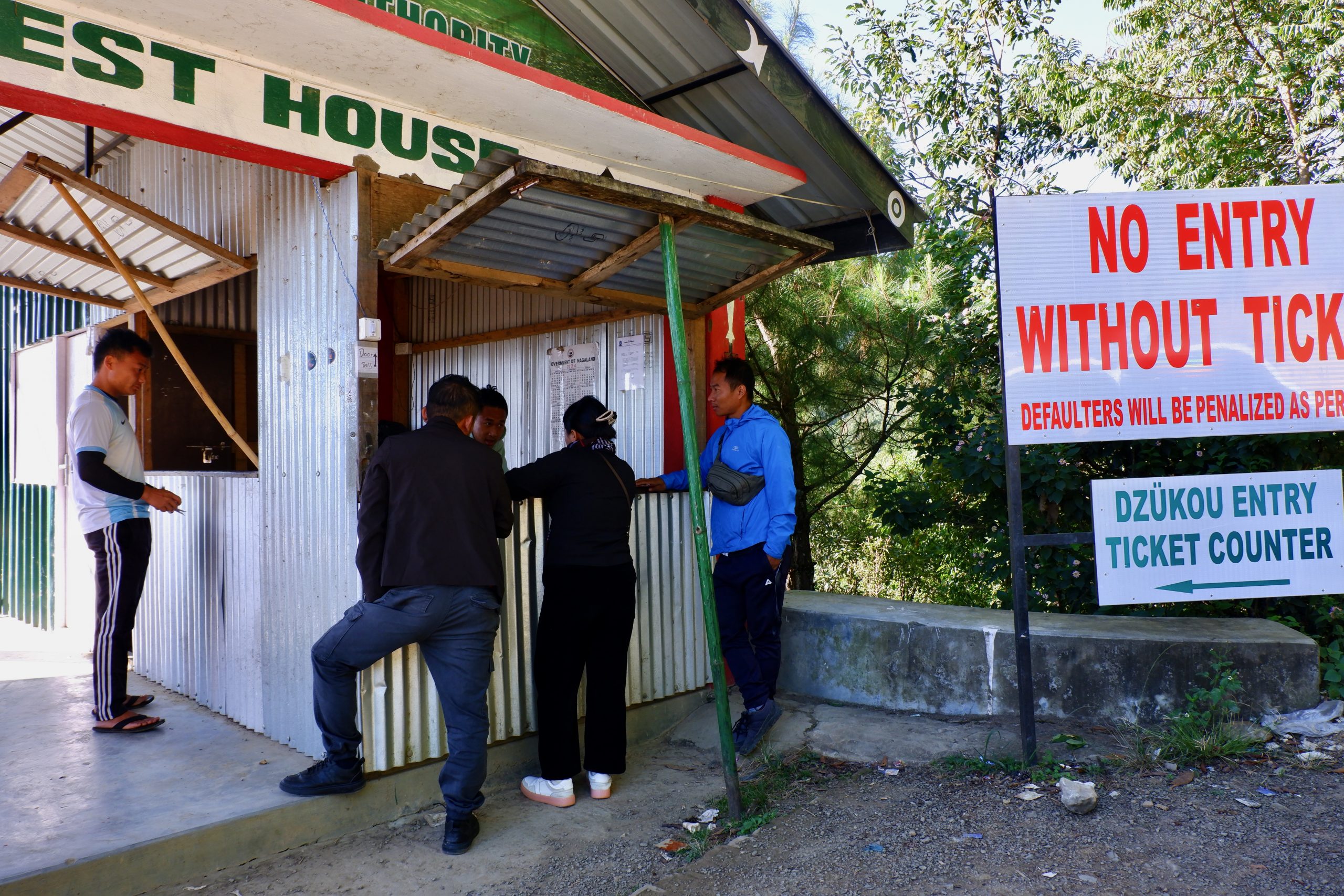 Checkpost
Checkpost
 Writer
Writer
And if you’ve made it this far without a guide, this is definitely the point where you should hire one. A guide is a must, not an option. Still, I met quite a few people without one. Nicholas said that probably not enough guides were working that day. Interesting….
Then we reached the upper parking area and the trek began. The driver came along too. The only item he carried with him was a huge knife…..
 Start
Start
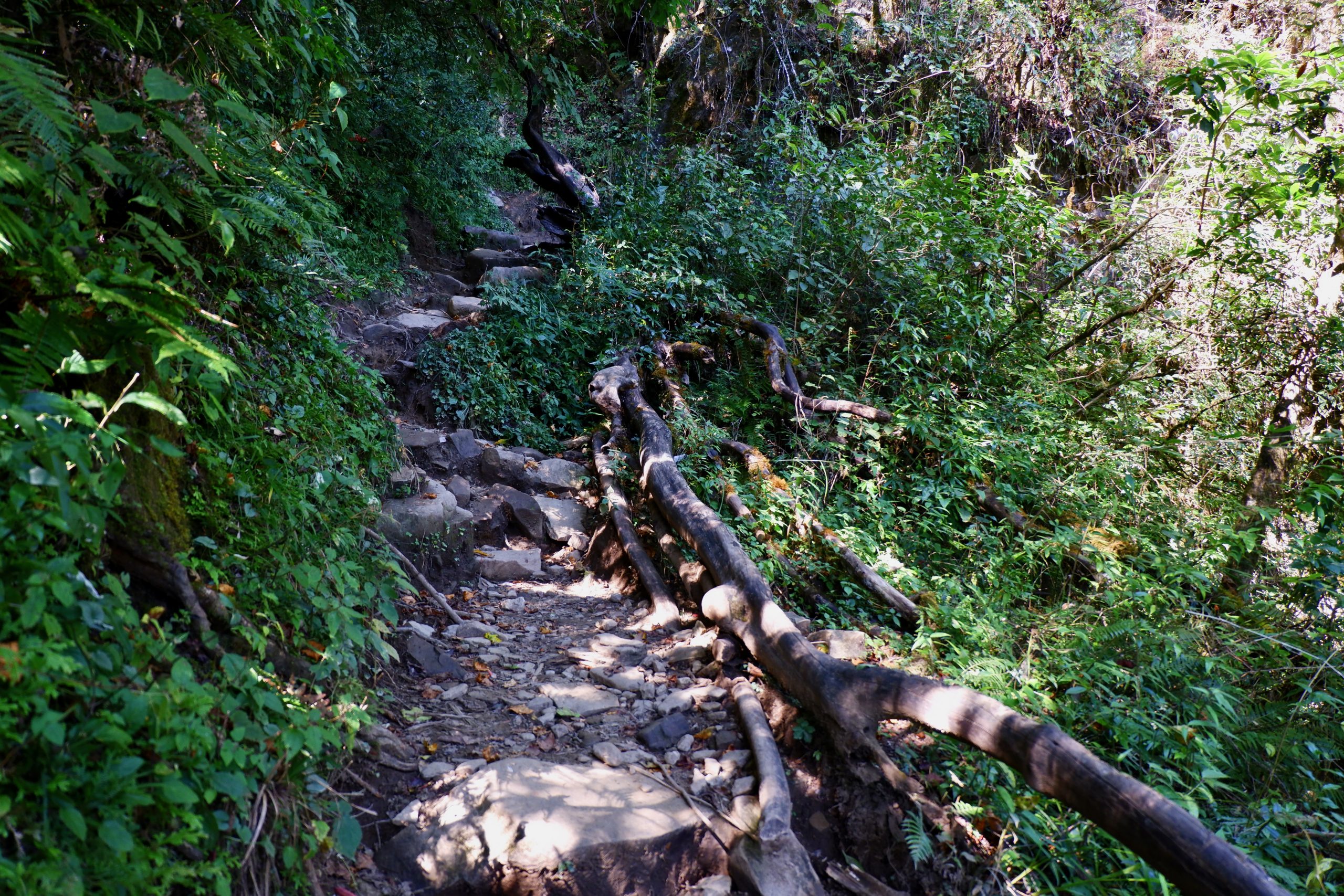 little steep ascent
little steep ascent
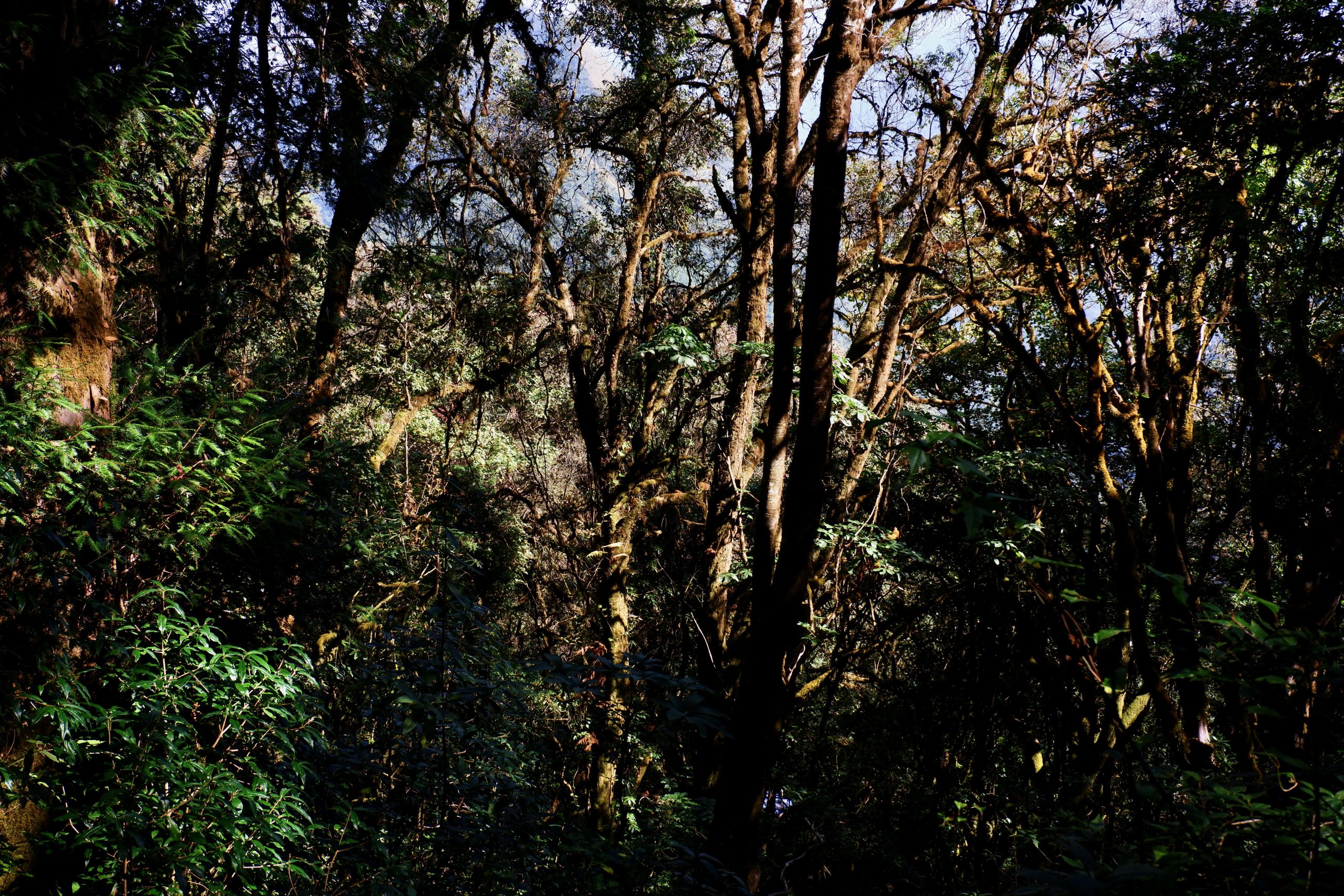 trees
trees
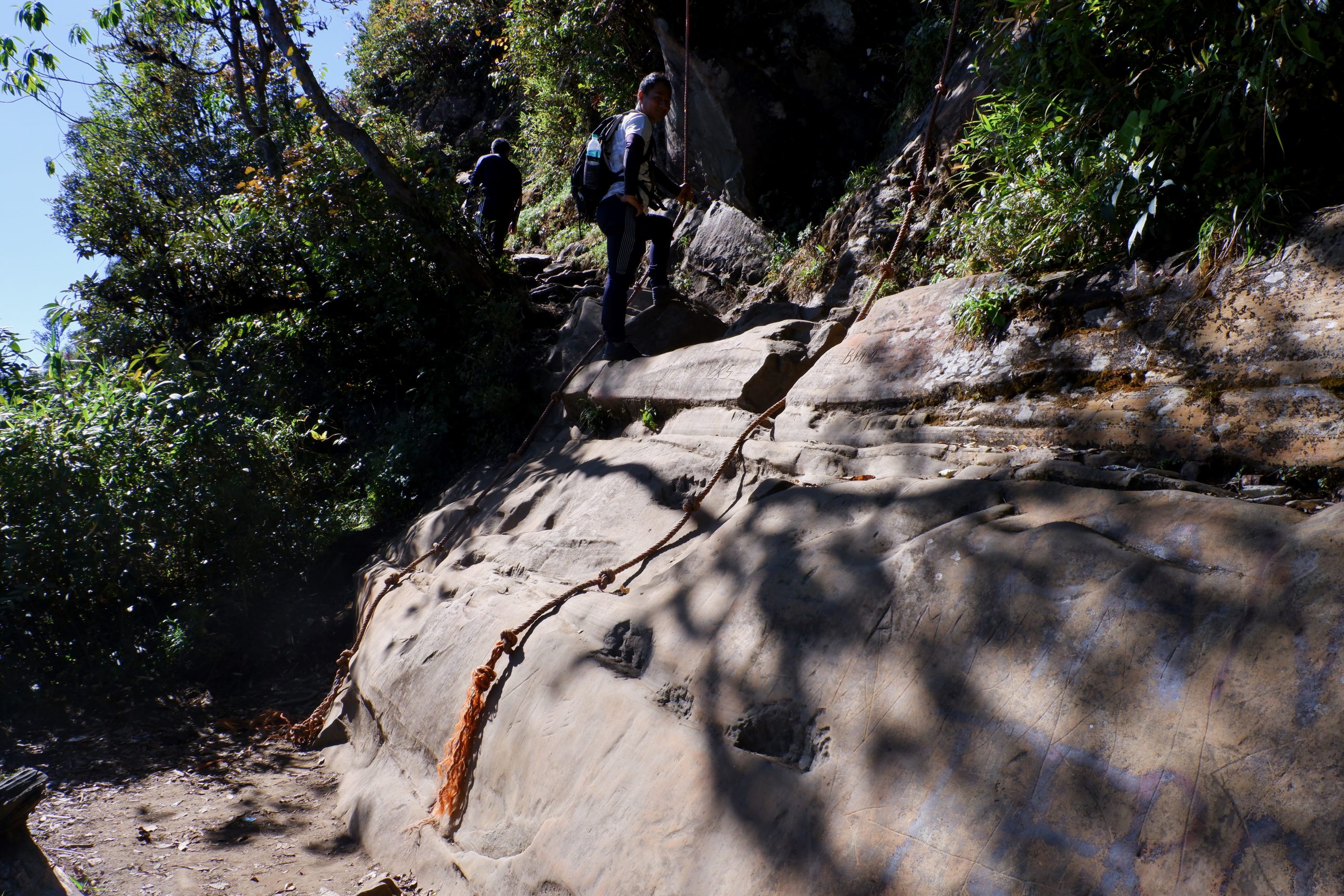 Helpers
Helpers
And then we reached the highest point of the hike, a beautiful viewpoint.
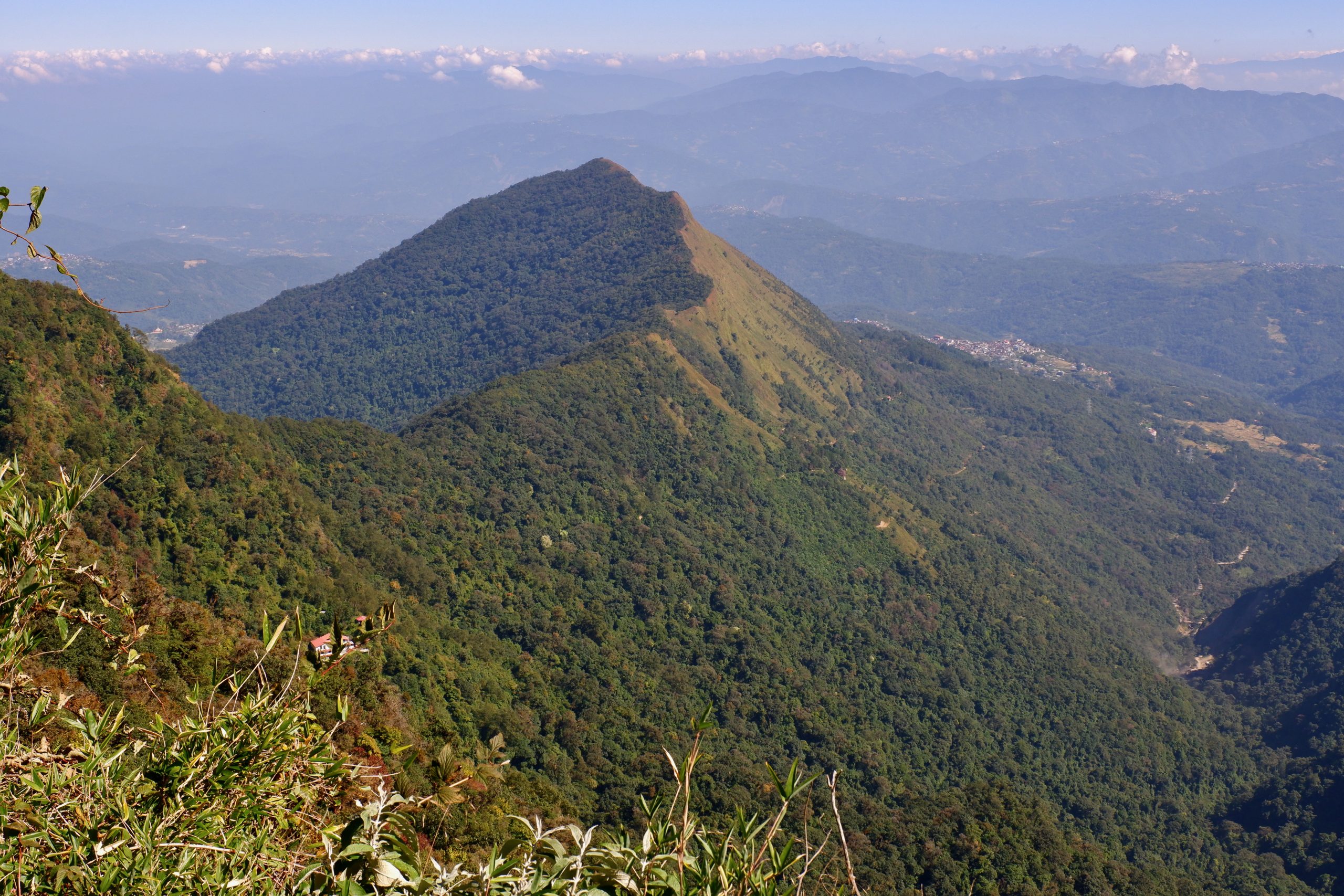 view
view
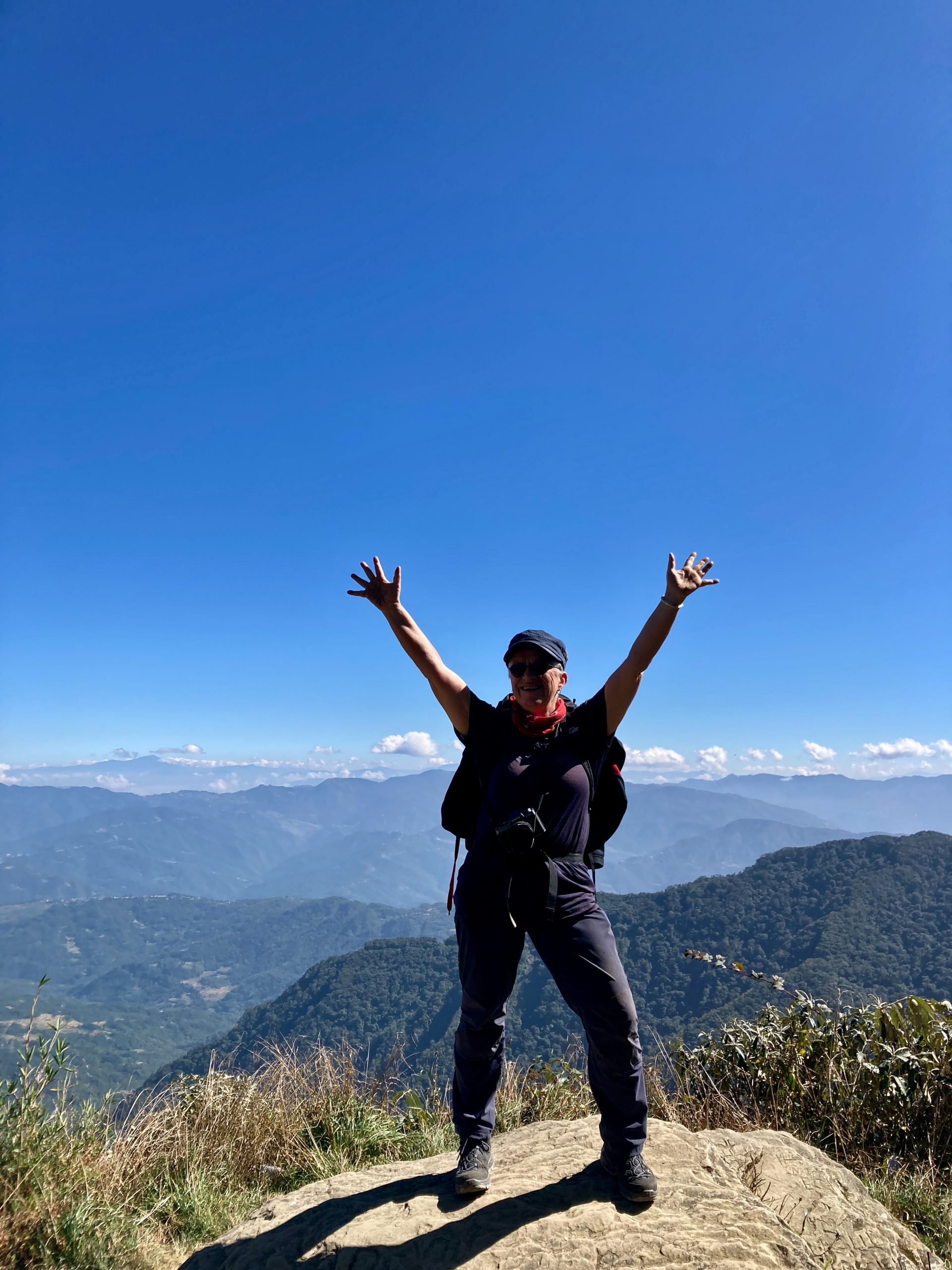 me
me
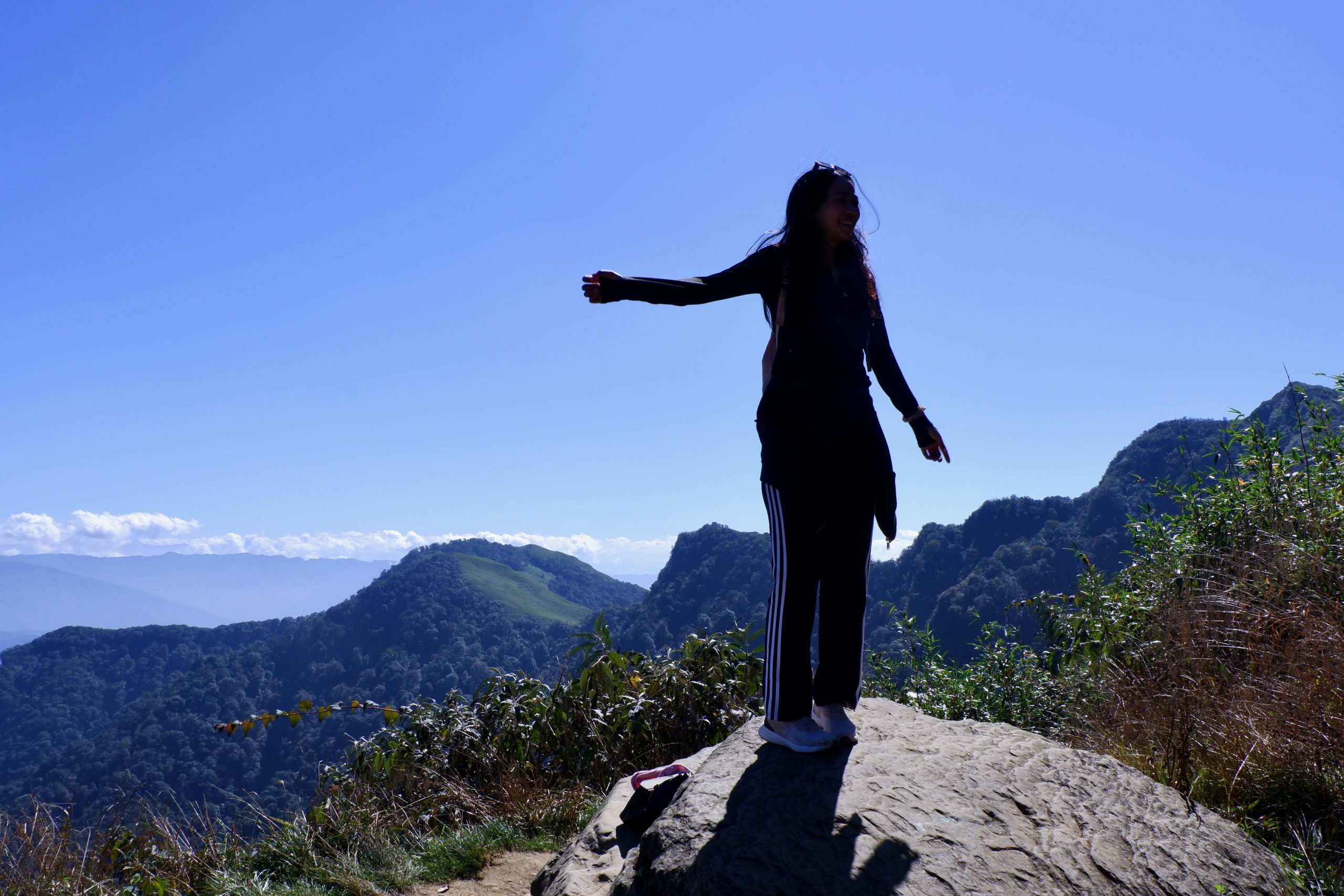 woman from Arunachal Pradesh
woman from Arunachal Pradesh
After that, the trail went steeply downhill for a bit and then continued along the mountainside at the same elevation. I had never seen a landscape like this before. We walked through very tall bamboo, lower shrubs — and then there were all these massively charred tree trunks. In 2020/21, a fire had swept through here and it took ten days to extinguish it. Impressive how quickly the vegetation has grown back. But also surprising: I didn’t hear a single bird or see any animal. Not even lizards or anything like that.
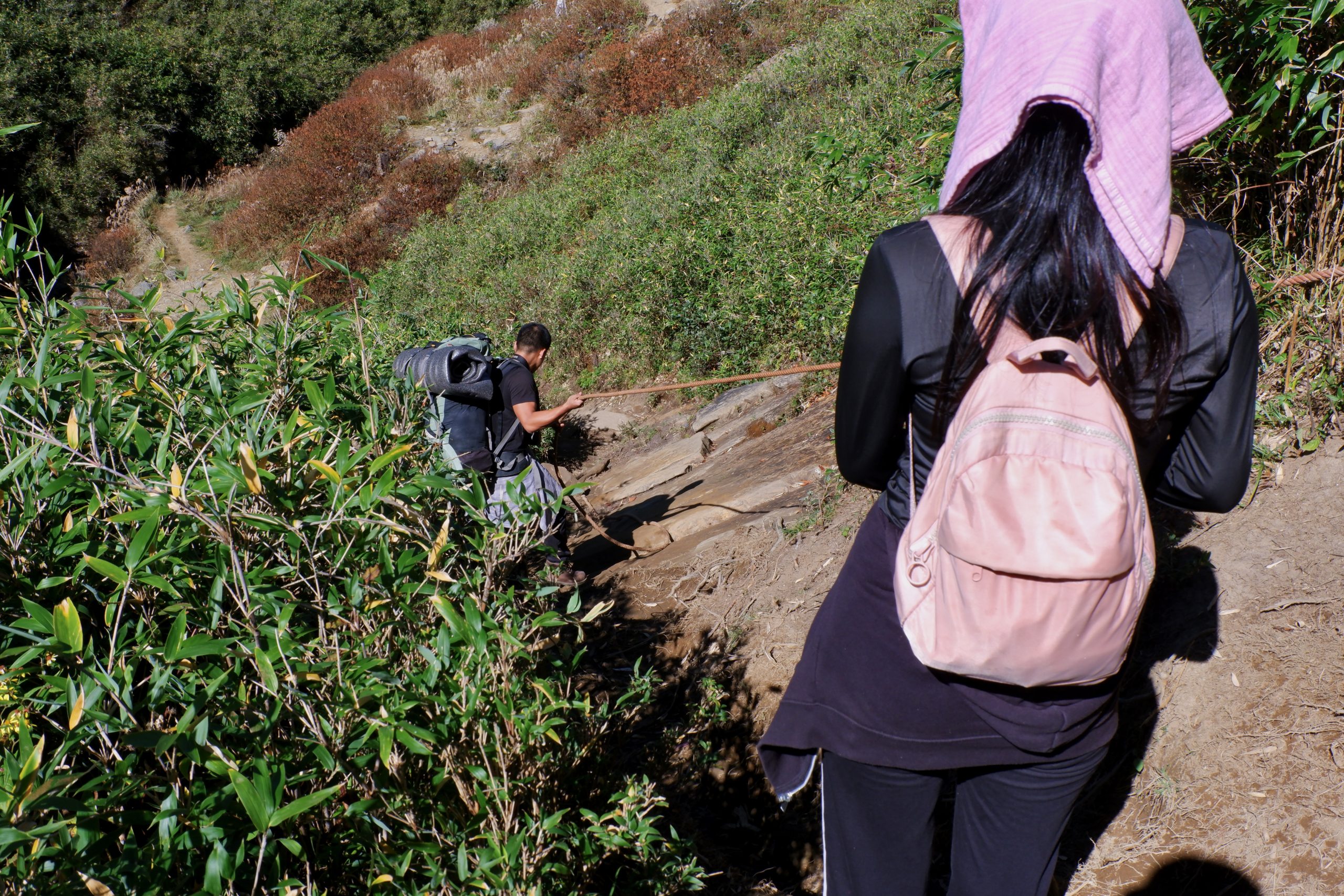 1
1
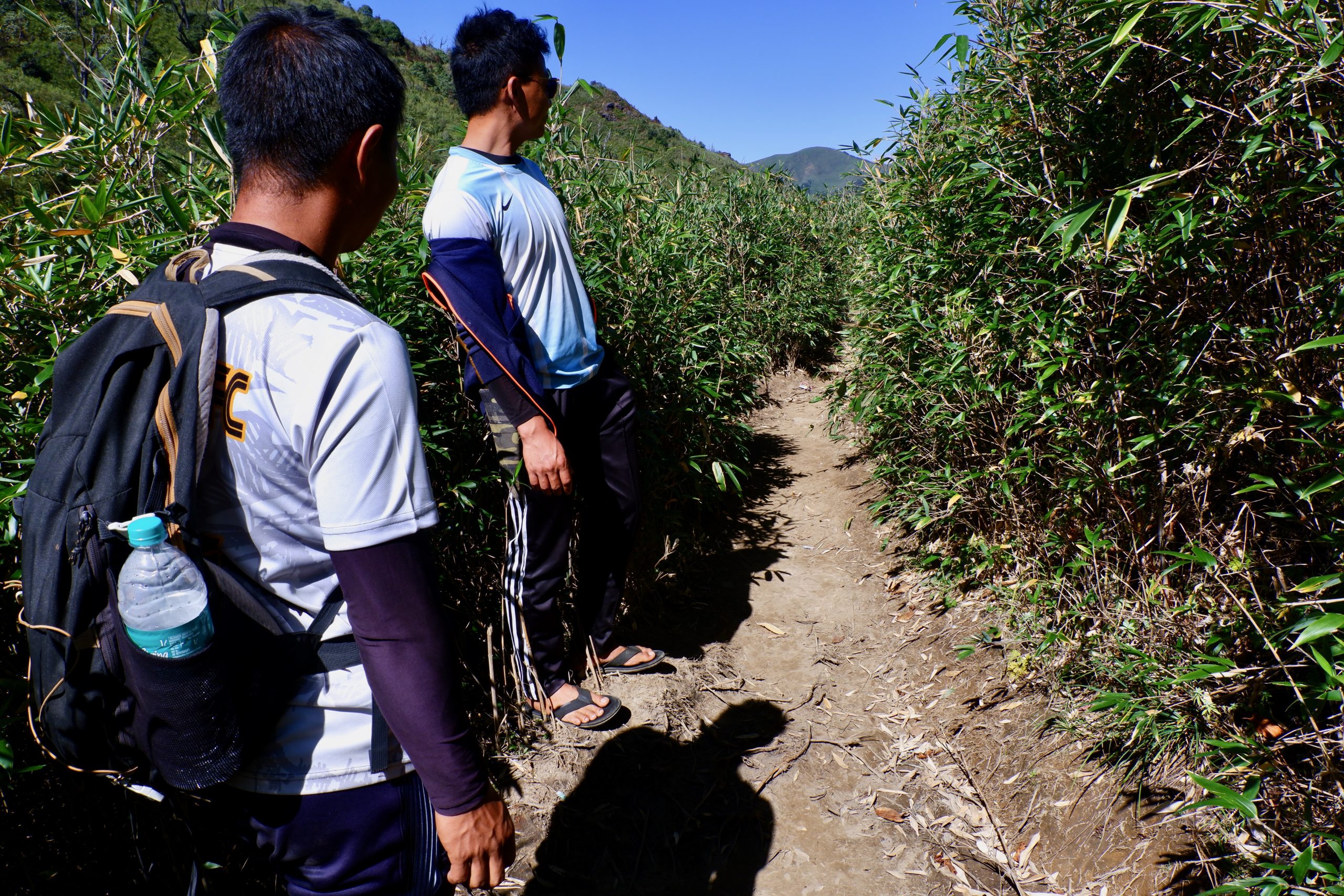 2
2
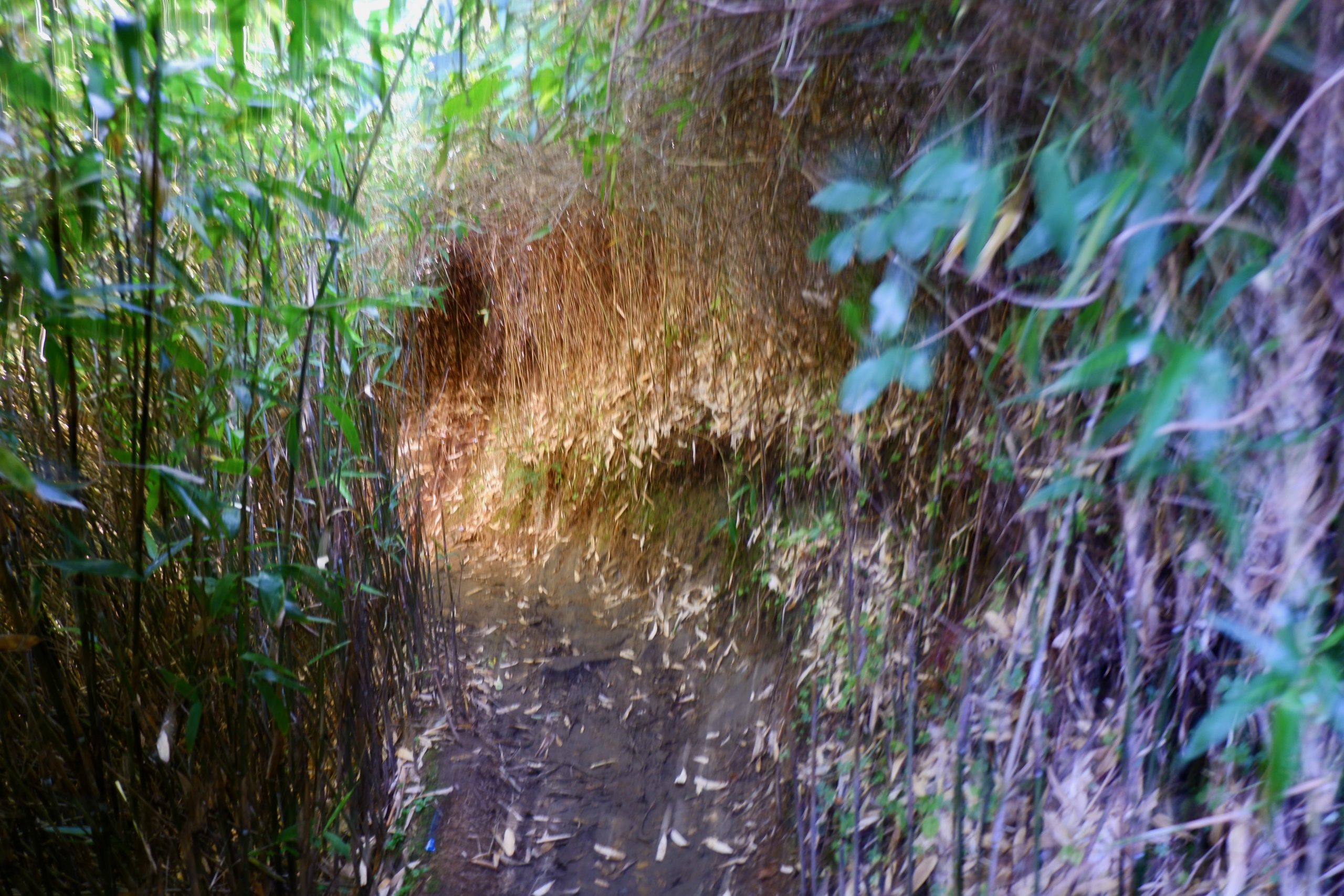 3
3
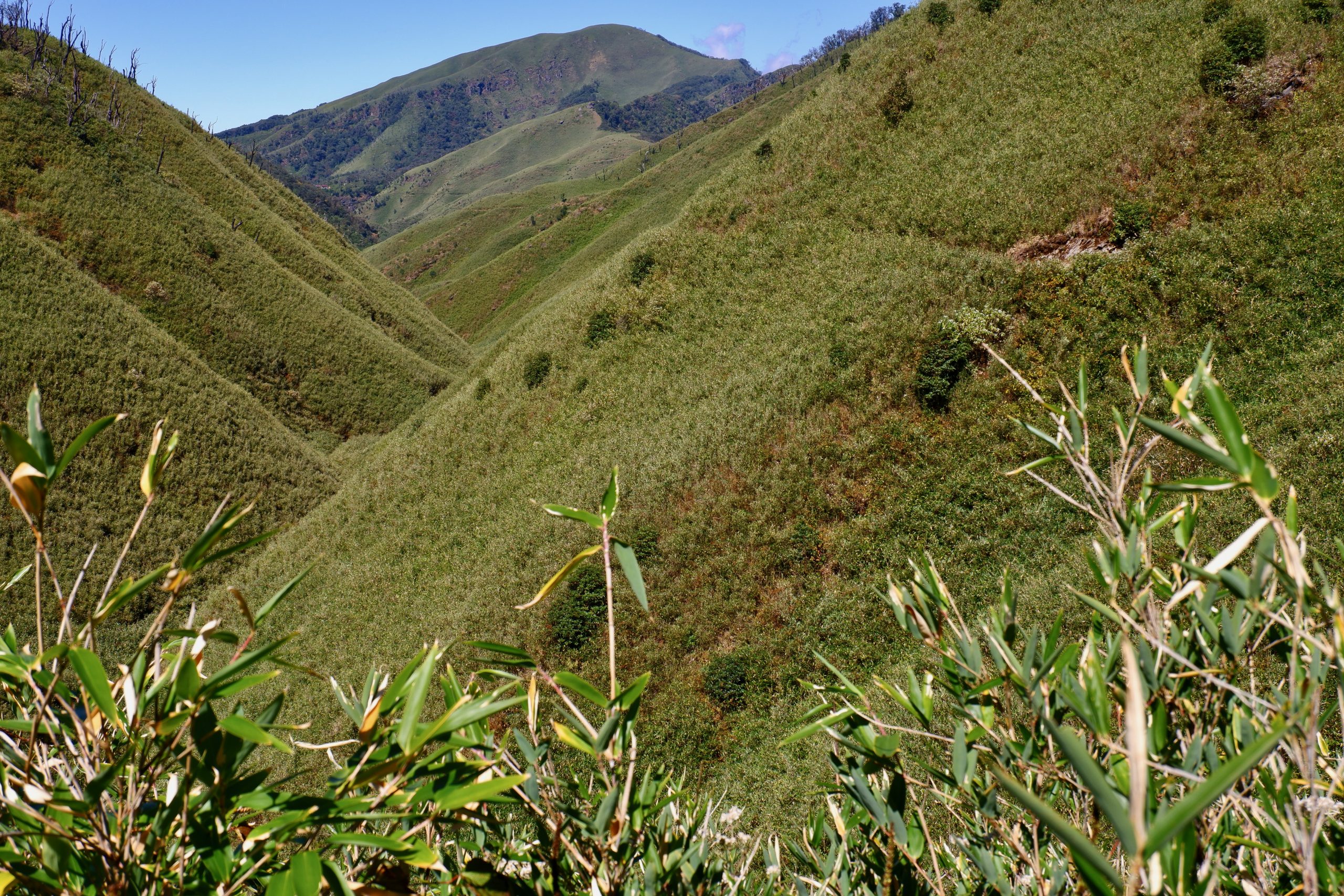 4
4
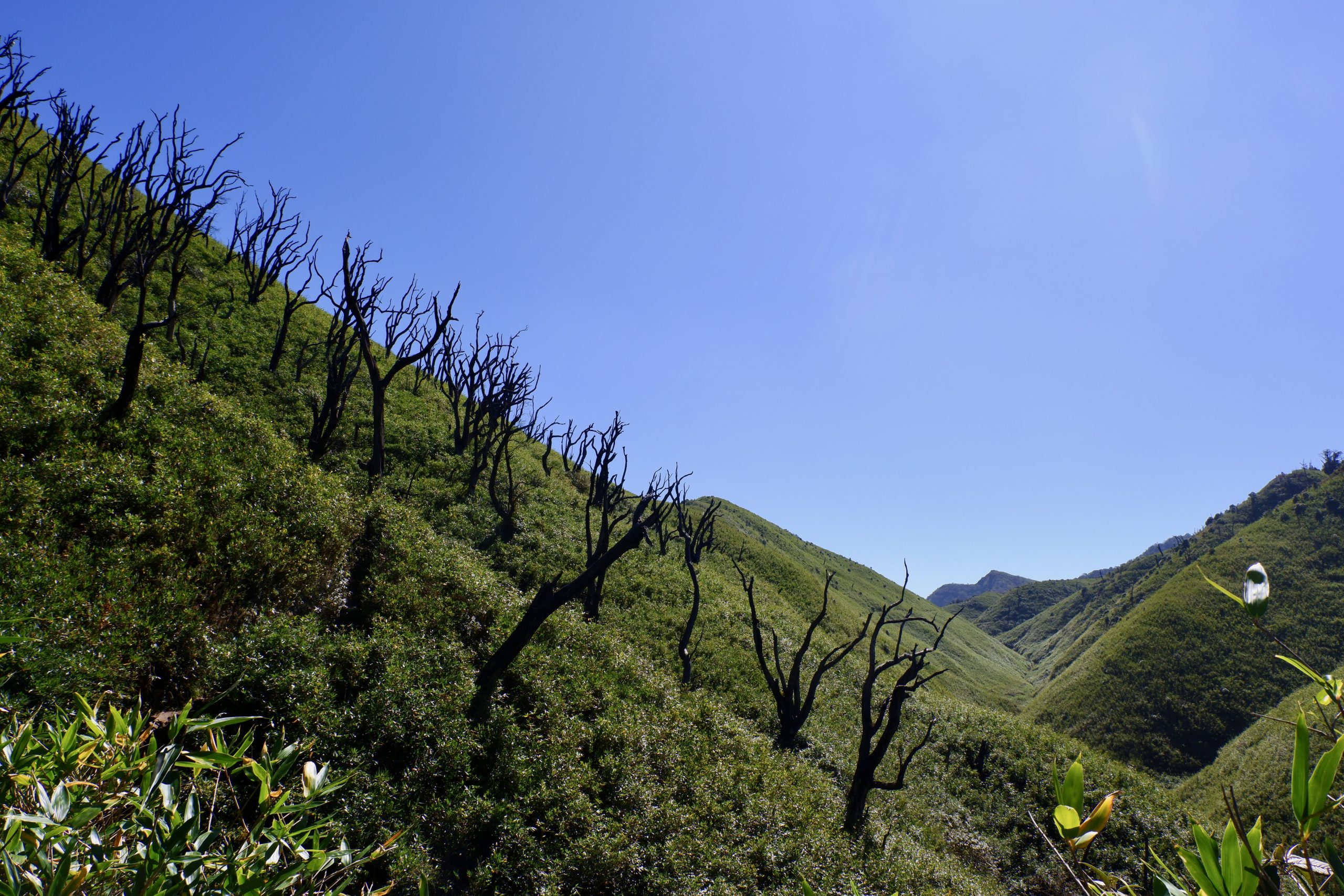 5
5
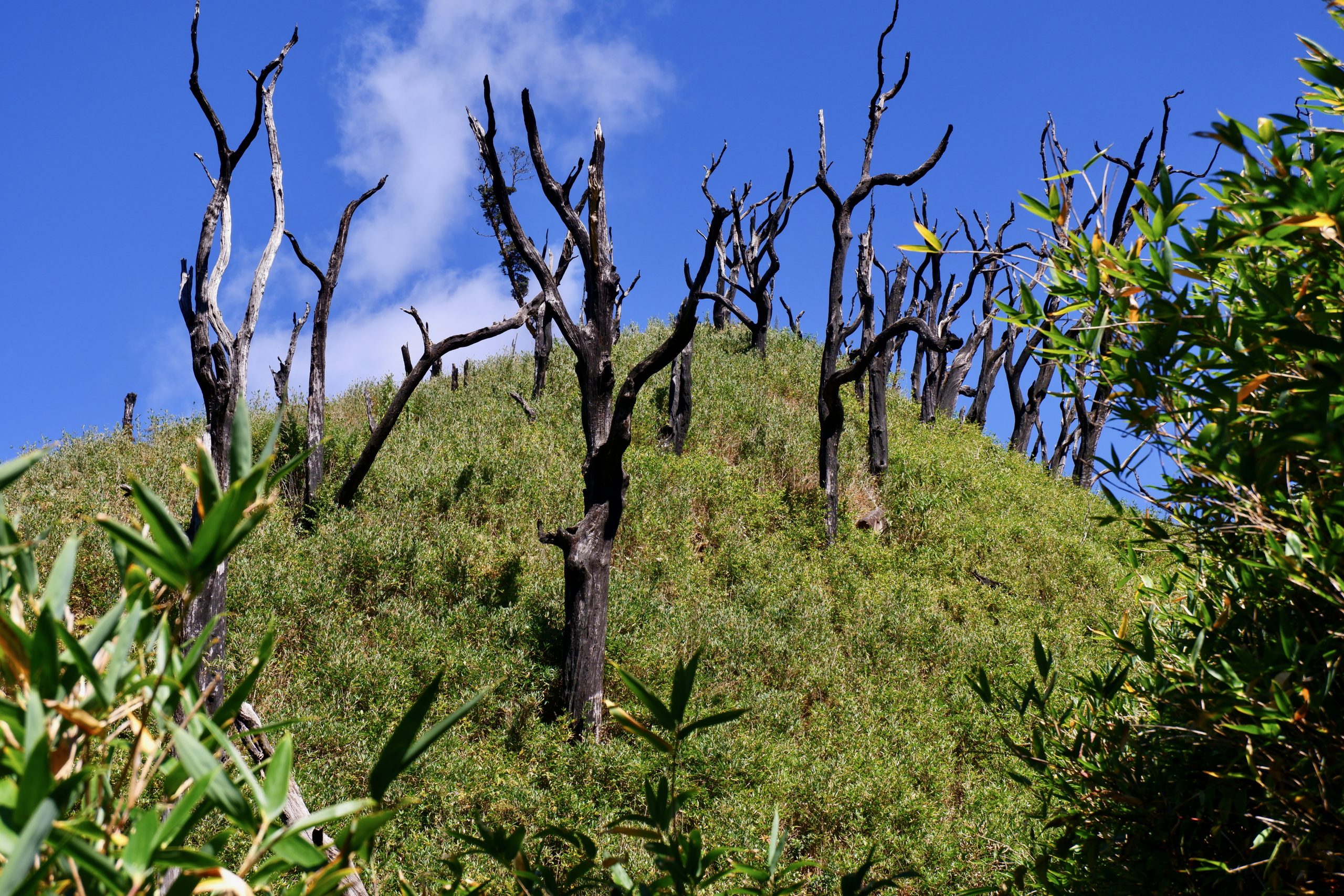 6
6
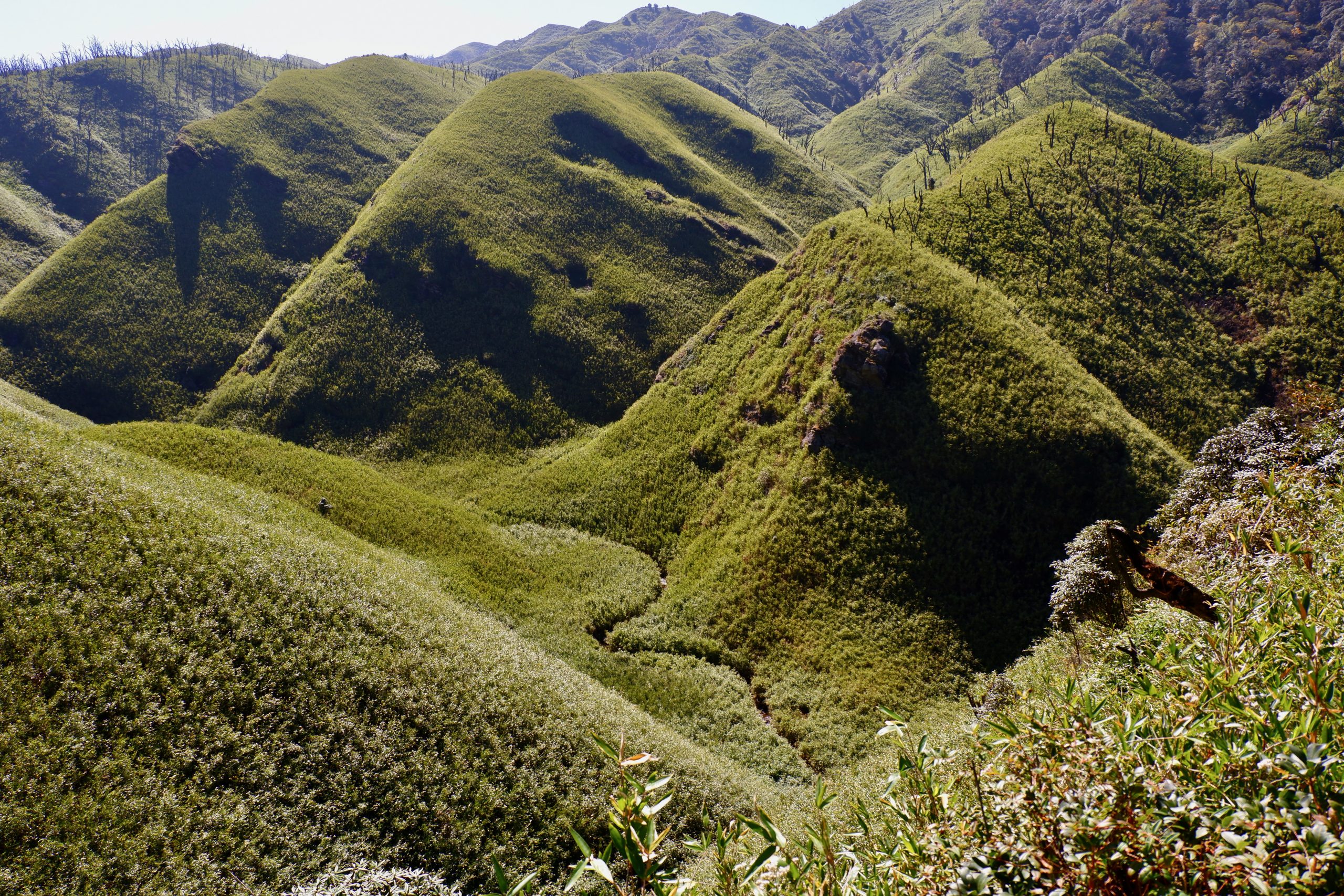 7
7
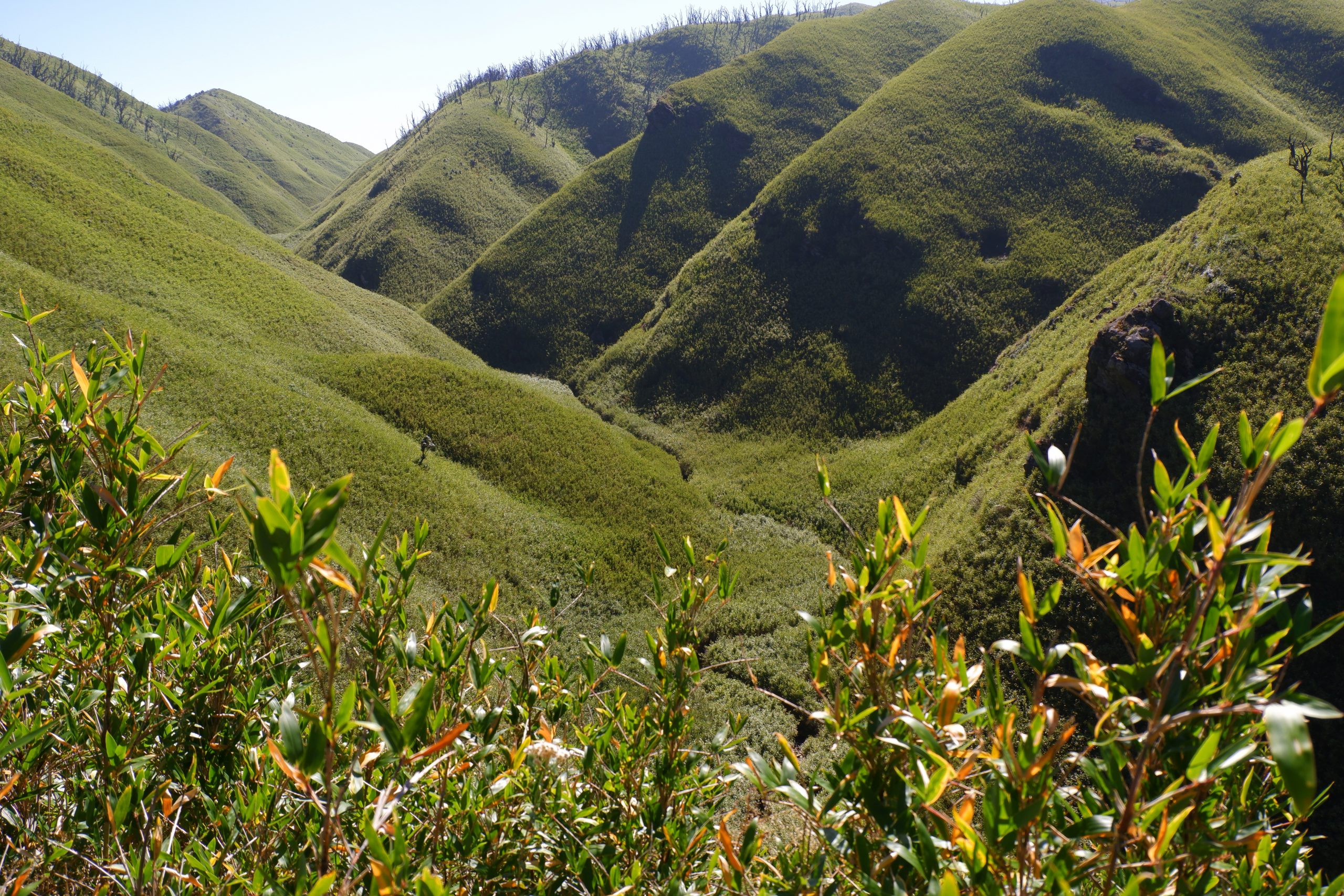 8
8
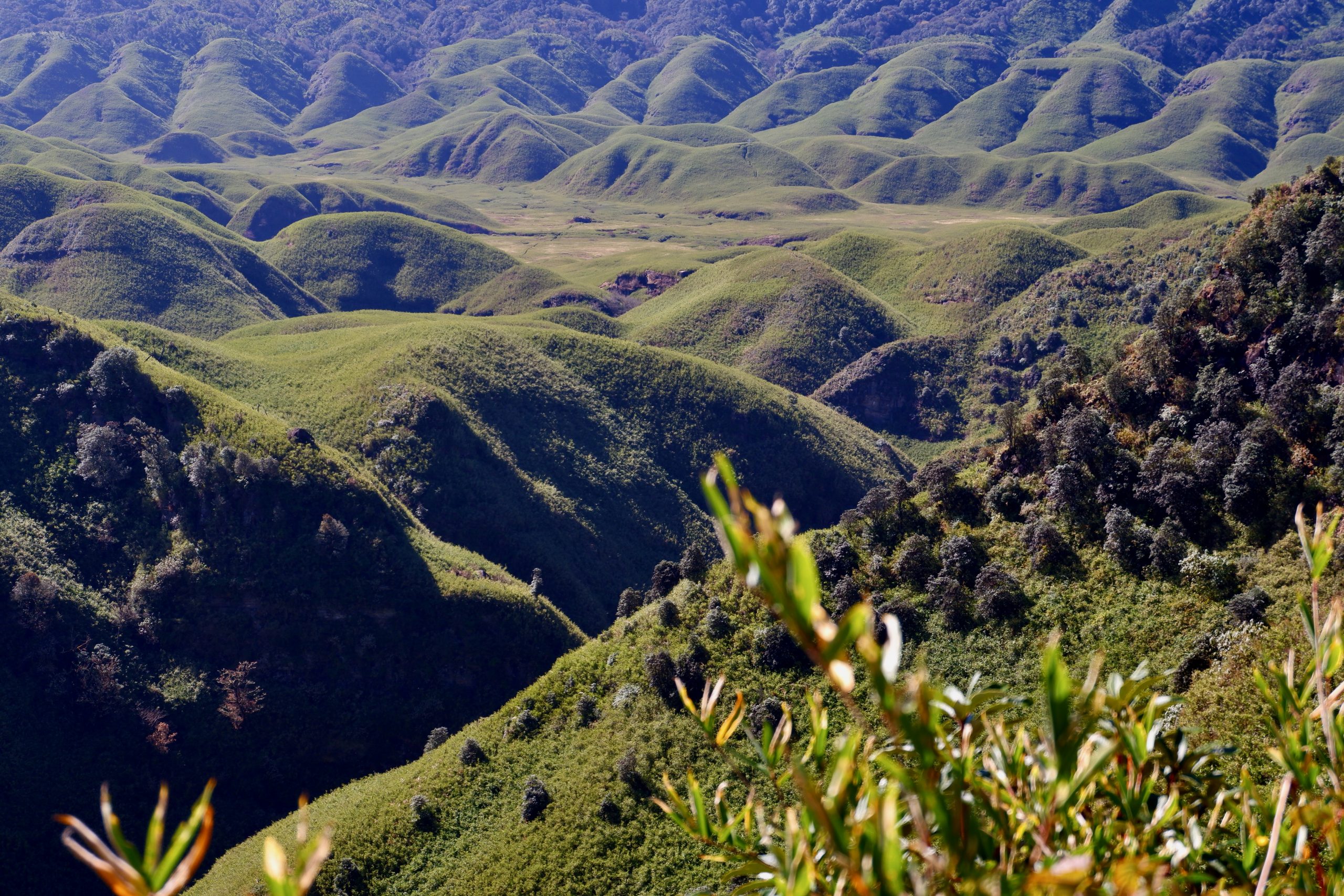 9
9
The first destination was a hut. You can stay overnight there — which would actually have been a very good idea, except that it’s all quite basic. Unless, of course, you bring your own better gear. You can sleep in the tents or in the big dormitory, and there might also be smaller rooms, though I didn’t see any. They carry only limited supplies up to keep the hut running, and later in the dry season there can also be water shortages.
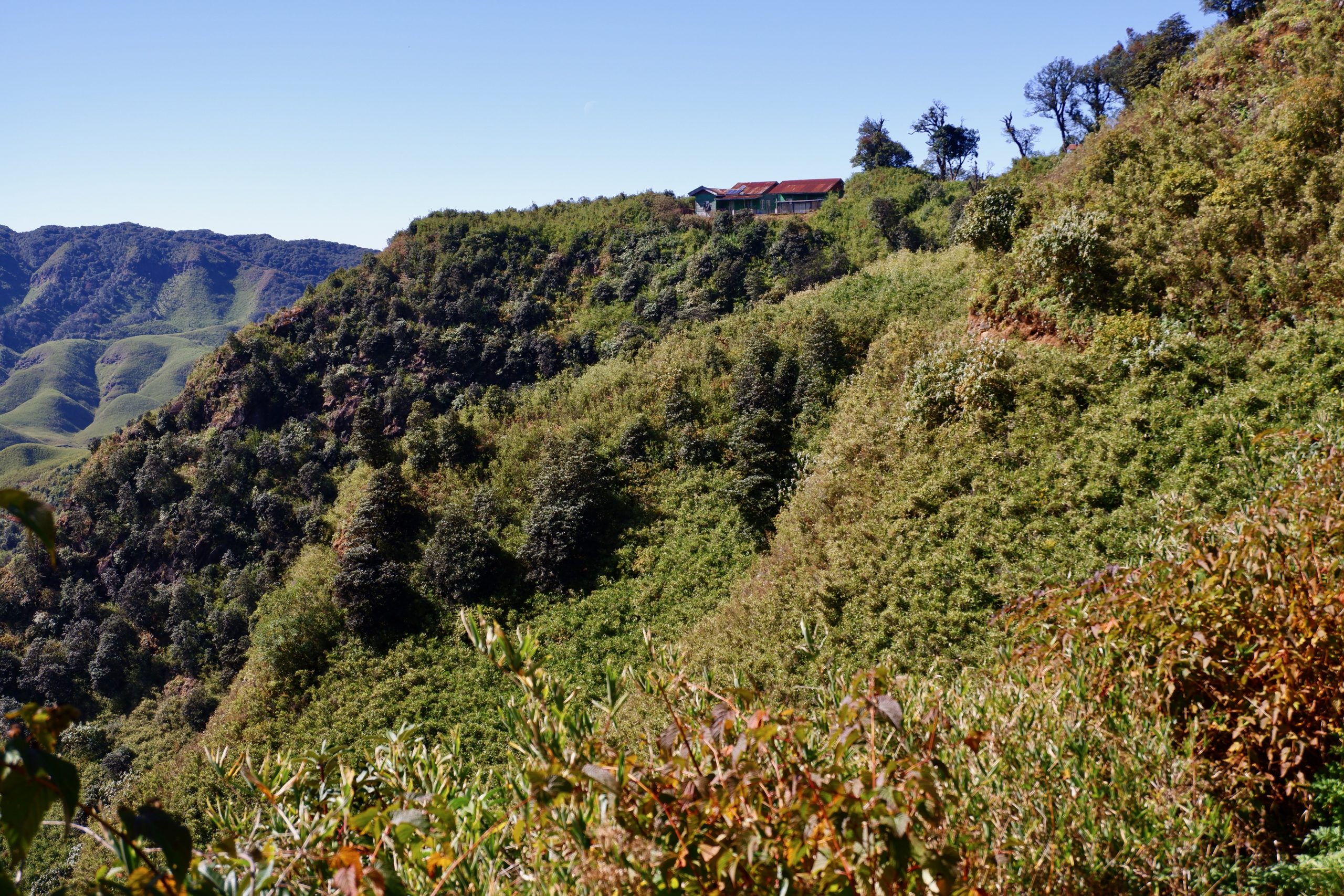 10
10
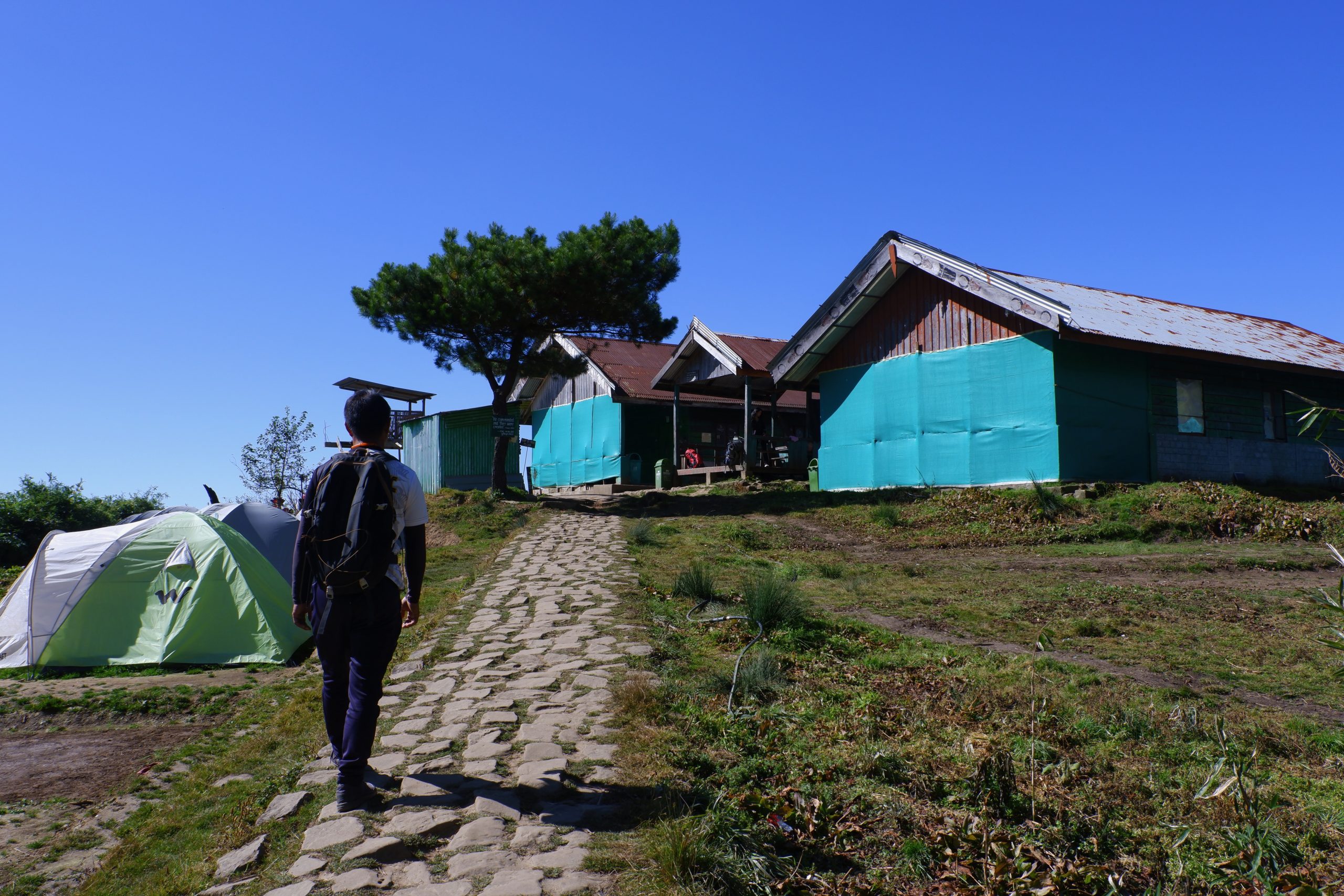 11
11
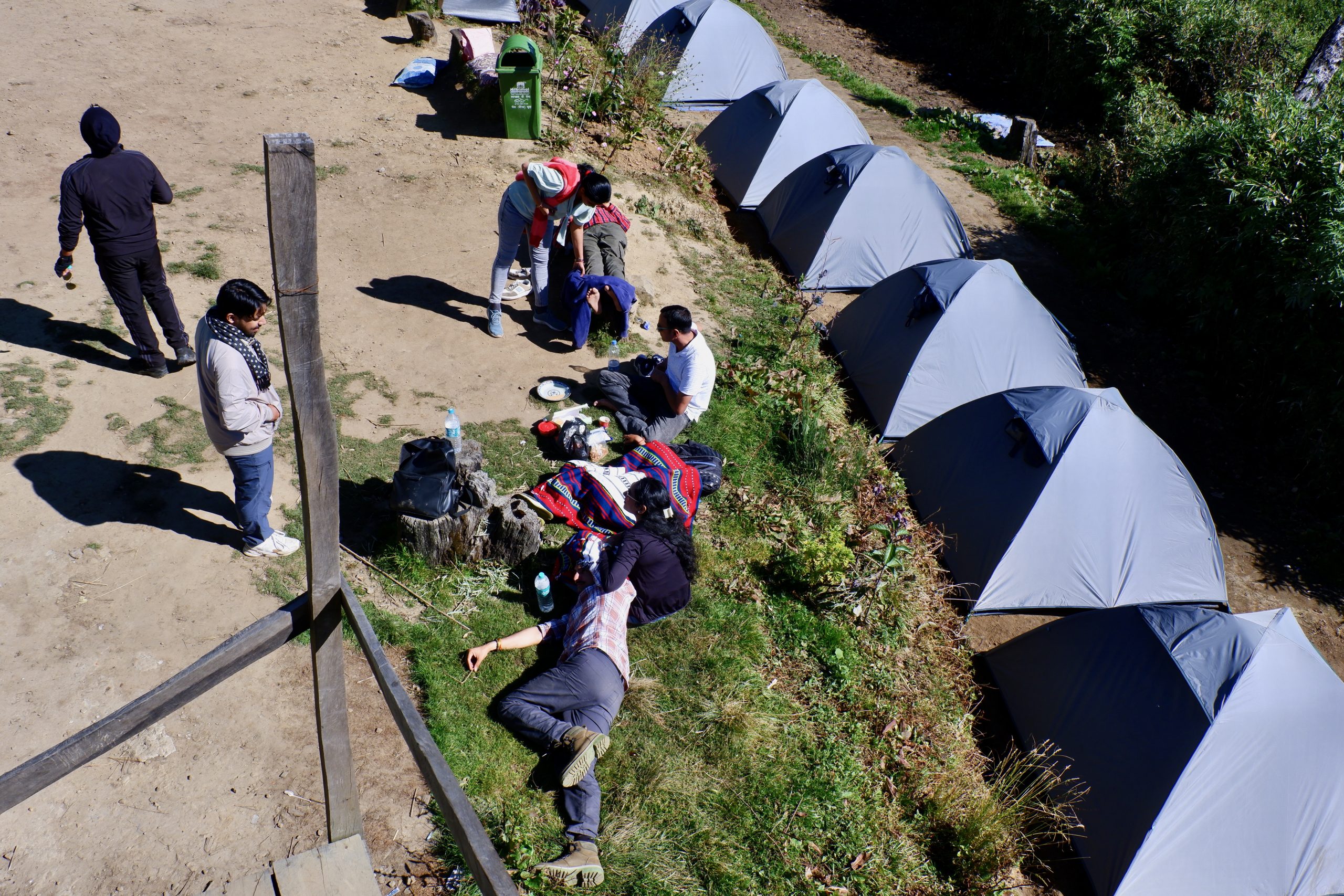 12
12
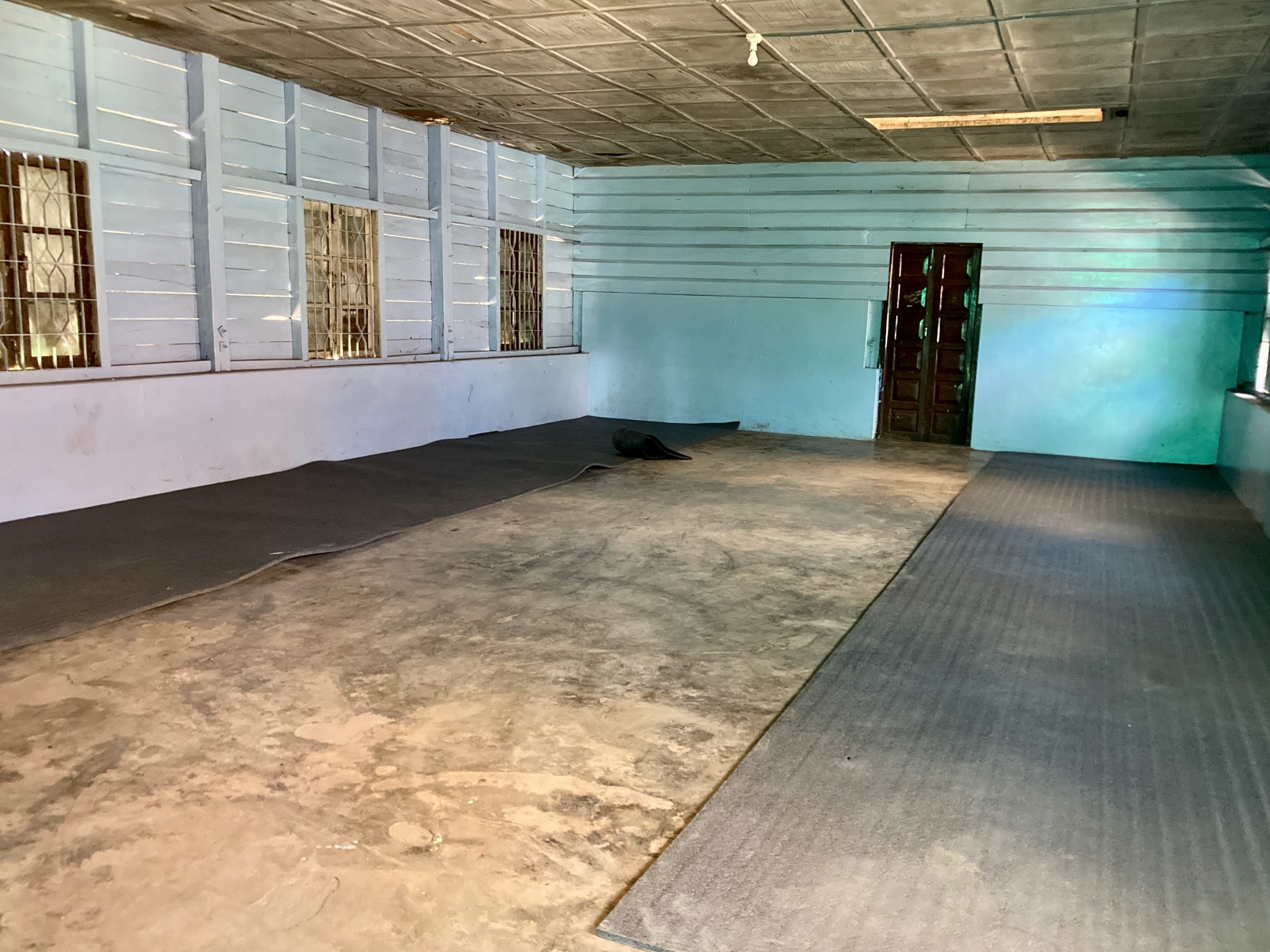 13
13
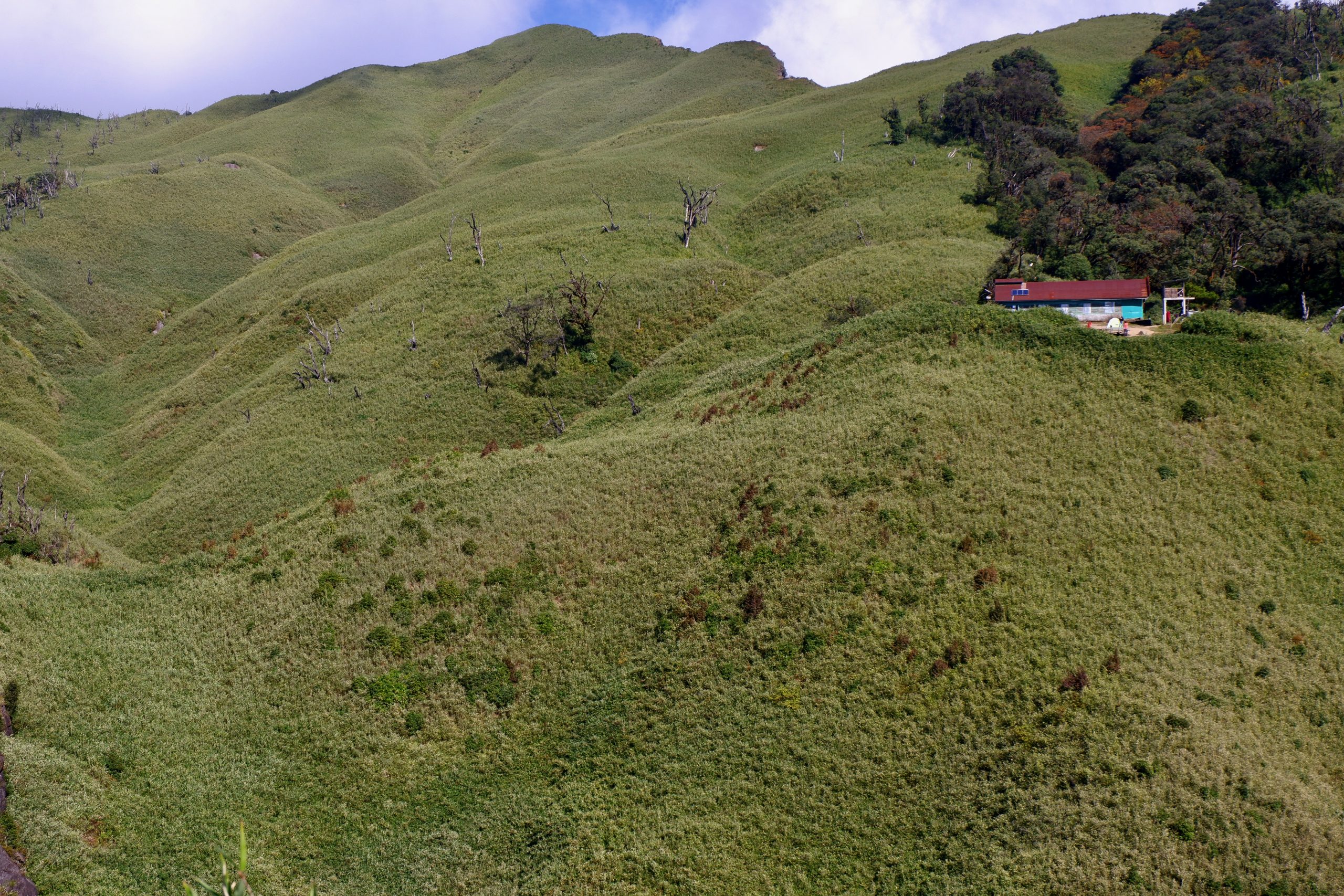 14
14
Staying overnight is better because (a) you get the best light in the morning and late afternoon, and (b) you have enough time for the ‘real’ Dzukou Valley, which lies a bit further down the mountainside. With the early sunset, time gets a bit tight — and if you’re as slow as I am, even more so. So I didn’t make it all the way down, but I did at least catch a glimpse.
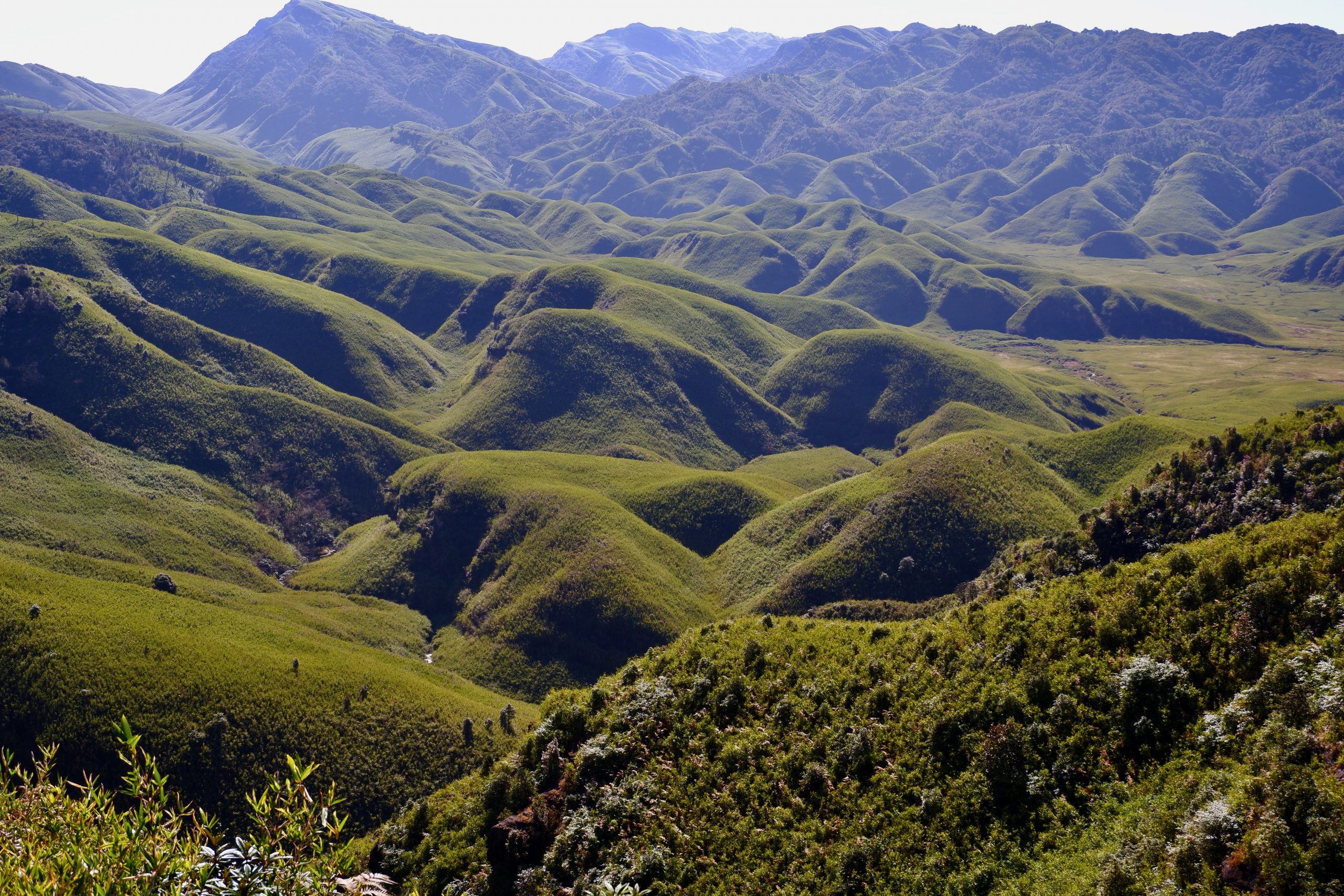 15
15
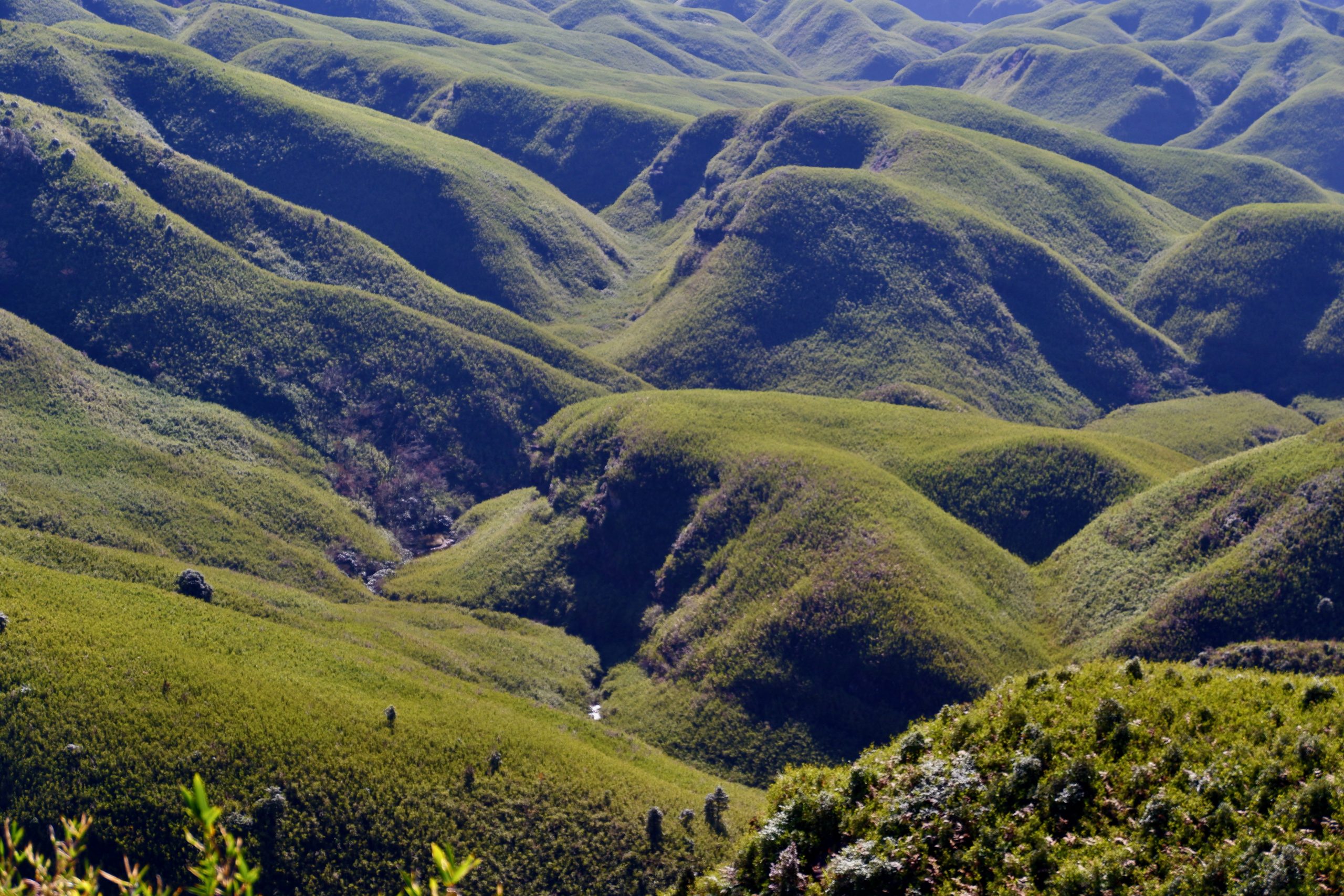 16
16
 17
17
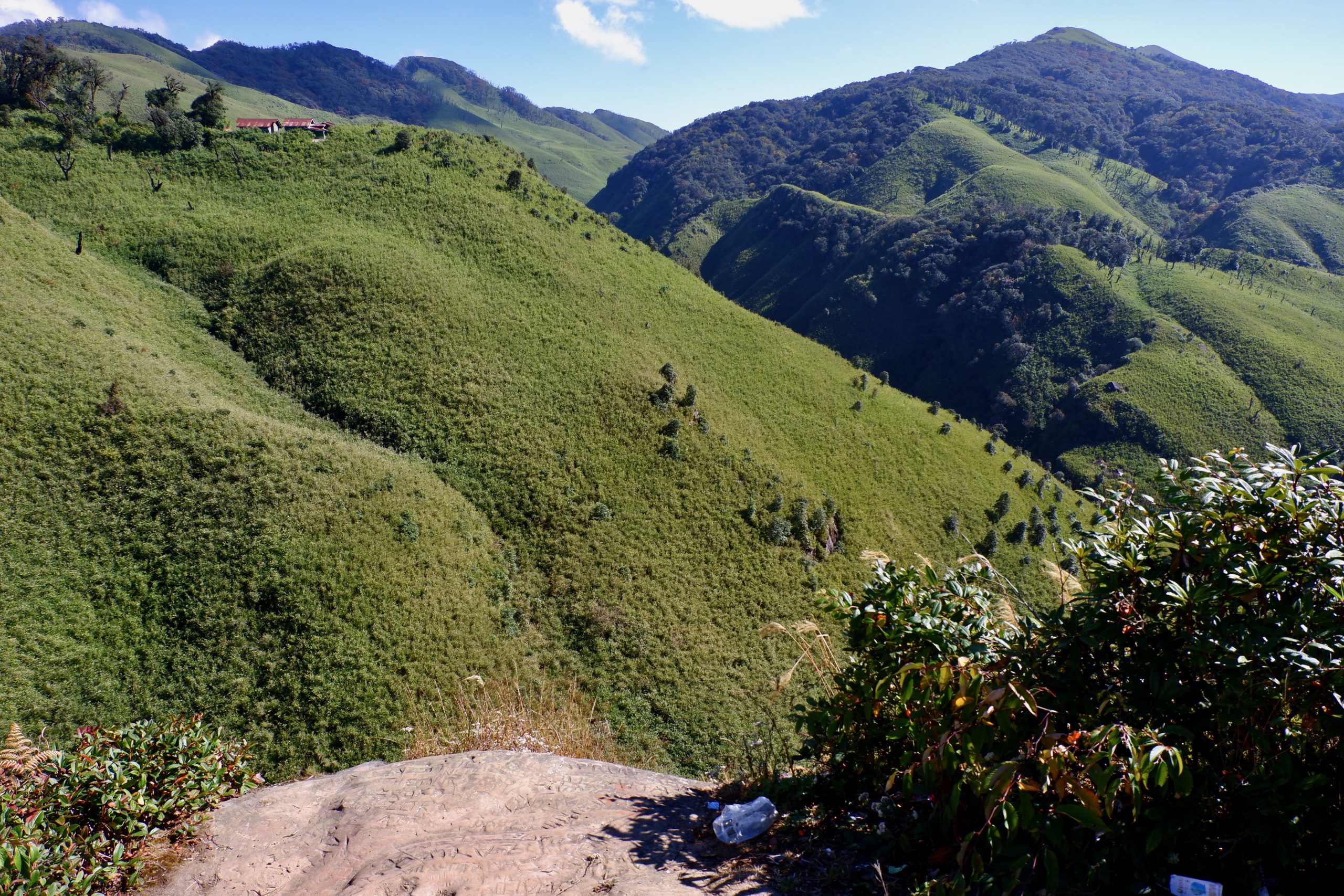 18
18
Besser ist natürlich auch, wenn man direkt am Ort übernachtet, dann könnte man eher starten und hätte auch mehr Zeit. So mussten wir schon um 13:00 an die Rückkehr denken.
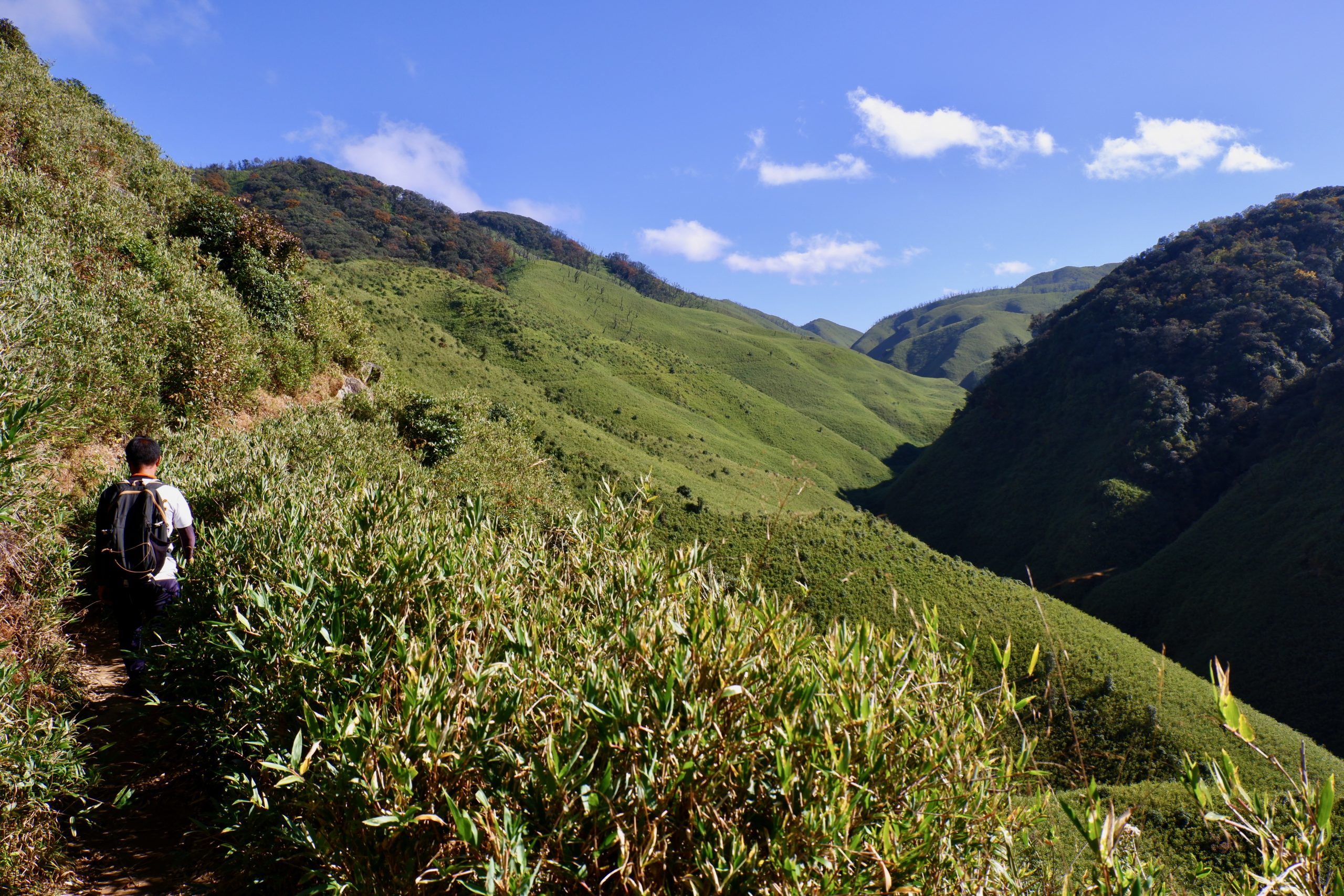 19
19
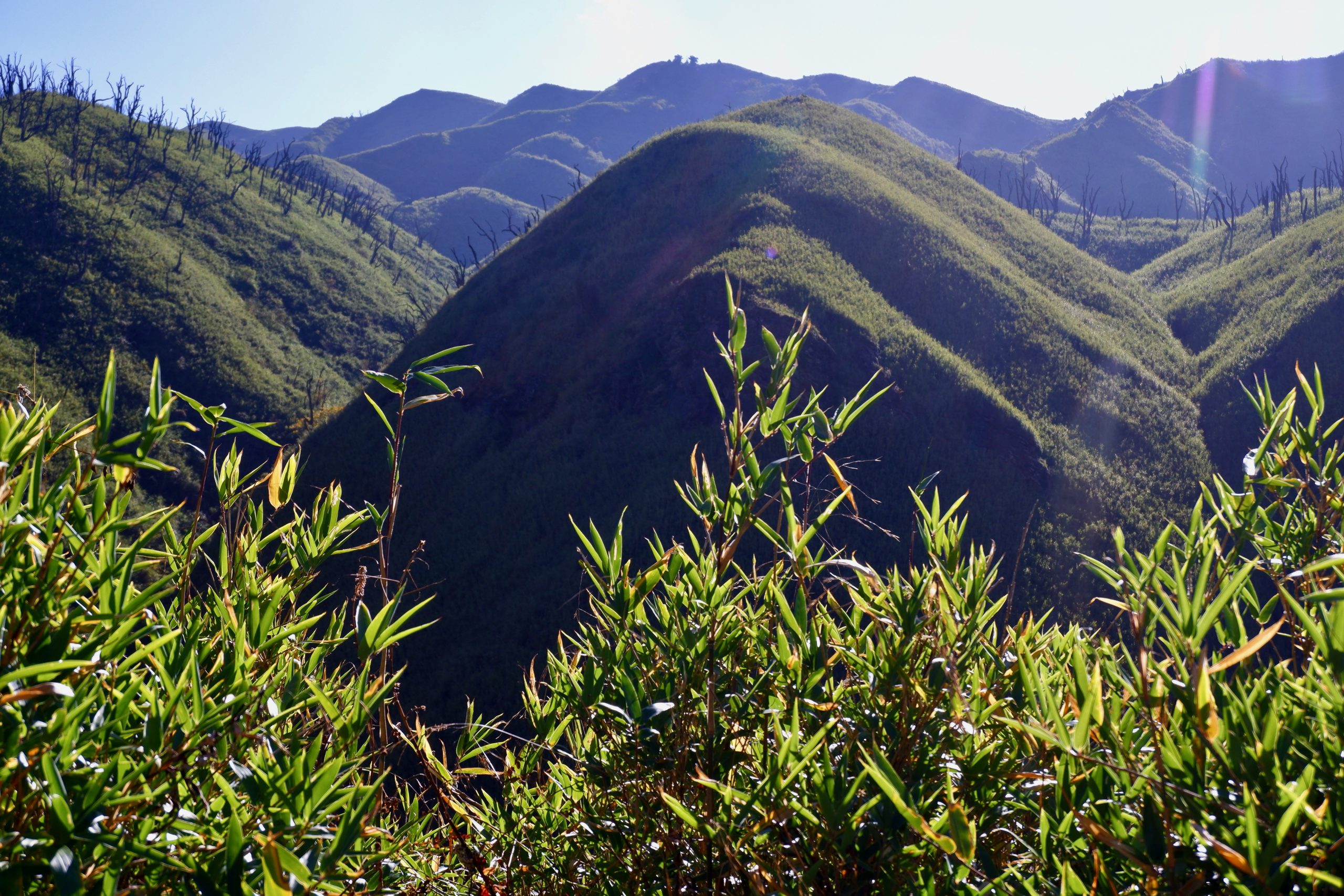 20
20
 21
21
As you can see, the light kept getting more and more beautiful. At the viewpoint there was even a stunning cloud formation to admire.
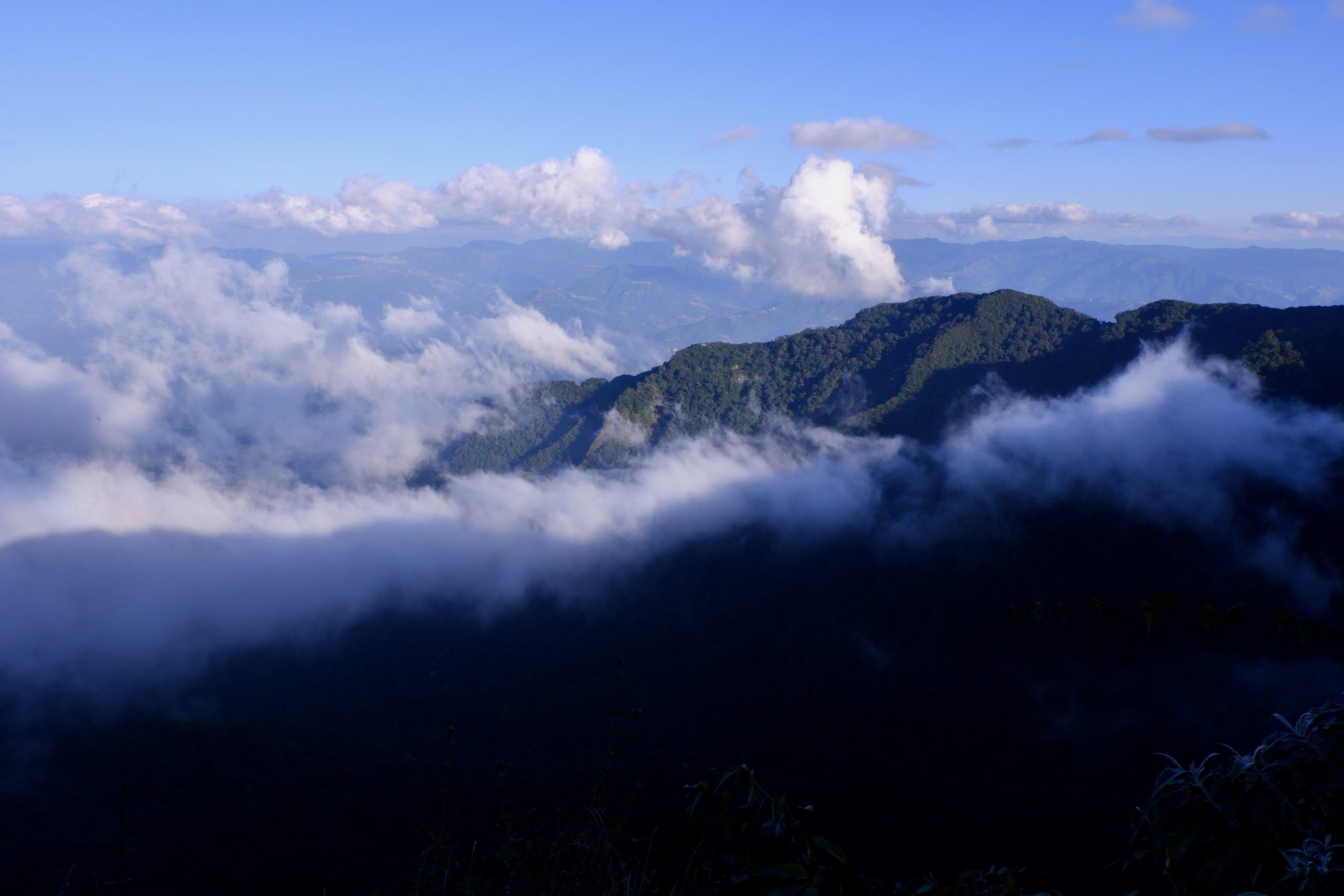 22
22
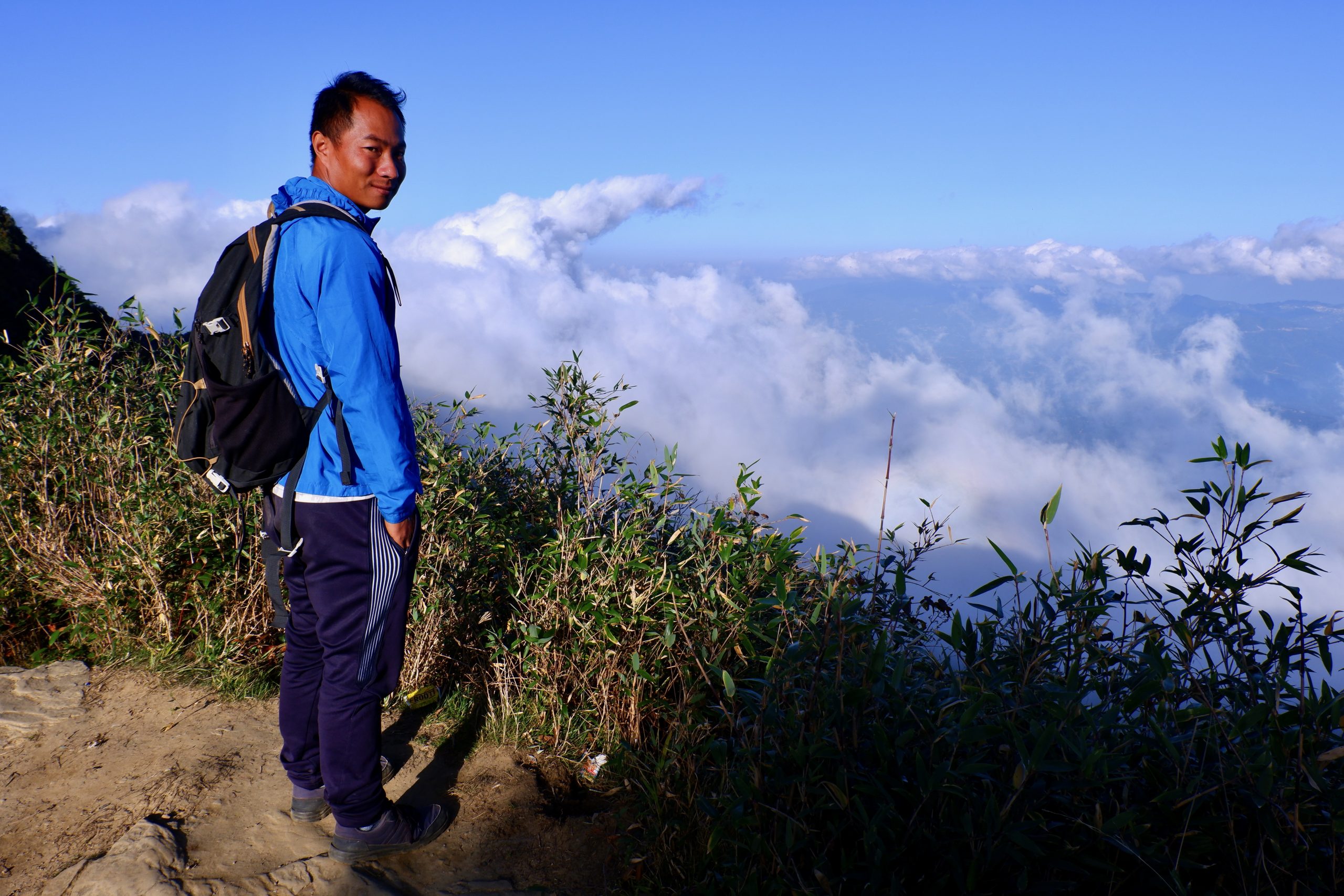 23
23
We came across quite a few people, and especially younger Indian men were eager to strike up a conversation with me — some even asked for a selfie.
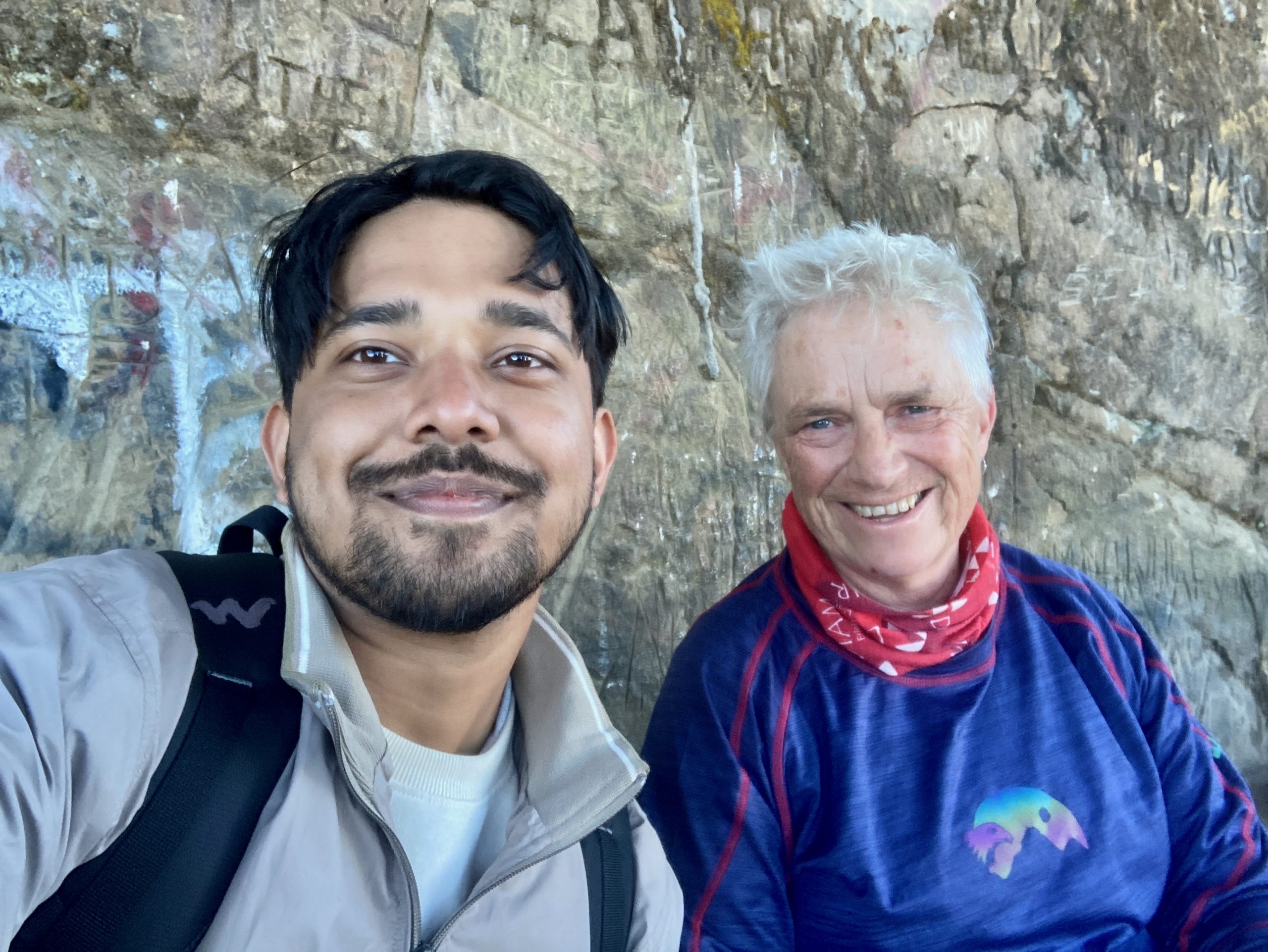 Indian and me
Indian and me
I actually had the problem that the guide barely spoke to me. When I tried to start conversations in the car and asked him questions, he answered mostly in monosyllables. He always looked friendly, but that was about it. With his buddy, on the other hand, he was quite talkative. On the one hand, I wondered what it was about me — whether I had behaved wrongly, whether I seemed unlikeable, or whatever else. On the other hand, it simply annoyed me. I had to drag information out of him (like about the fire). I wanted to ask him in the car what the reason was, but then I brought it up during the descent.
He said he’s always that quiet while hiking. There was nothing wrong with me. I then tried to make it clear to him that this is pretty annoying and that I don’t appreciate it. I also asked how the whole guide thing works — how he learned it and what exactly. Here, you take a 2–3 day course and then you’re a guide. You just need to know the area. First aid? Not really. He has walked this route well over a hundred times.
After that he did become more talkative, and we actually ended up chatting quite a lot. Still, I’m still a bit puzzled.
One topic was the Indians. They only wanted to communicate with me — he didn’t matter to them at all, even though he’s from here. They’re racist, he said, and call him chinki and momo. After COVID this became even worse. They’re all arrogant and stupid. Nagas have nothing to do with India; it would be better not to belong to it. He, at any rate, doesn’t see himself as Indian at all. Interesting. I hadn’t expected it to be this intense — and I hadn’t really noticed it. In hindsight, it seems to me that it goes both ways a bit — he also doesn’t approach Indians in a friendly manner. That doesn’t make things any easier for the ones who aren’t all that racist.
I wasn’t aware that Nagaland is this defiant. Maybe that’s also one reason for the strict PAP? Even the man from my guesthouse spoke negatively about India and Indians. Basically, he said, they have nothing to do with each other. A multicultural state? Hahaha — they just want to subjugate everything that is different from Hinduism and its moral values.
I realized: I really hadn’t expected it to be like this. I found the conversation quite eye-opening. And as I was about to leave the next day, I felt that in this short time I had actually learned quite a lot — more than from all the reading I had done beforehand.
And oh yes: the driver’s friend had brought the huge knife to cut vegetation, which makes an excellent broom!
